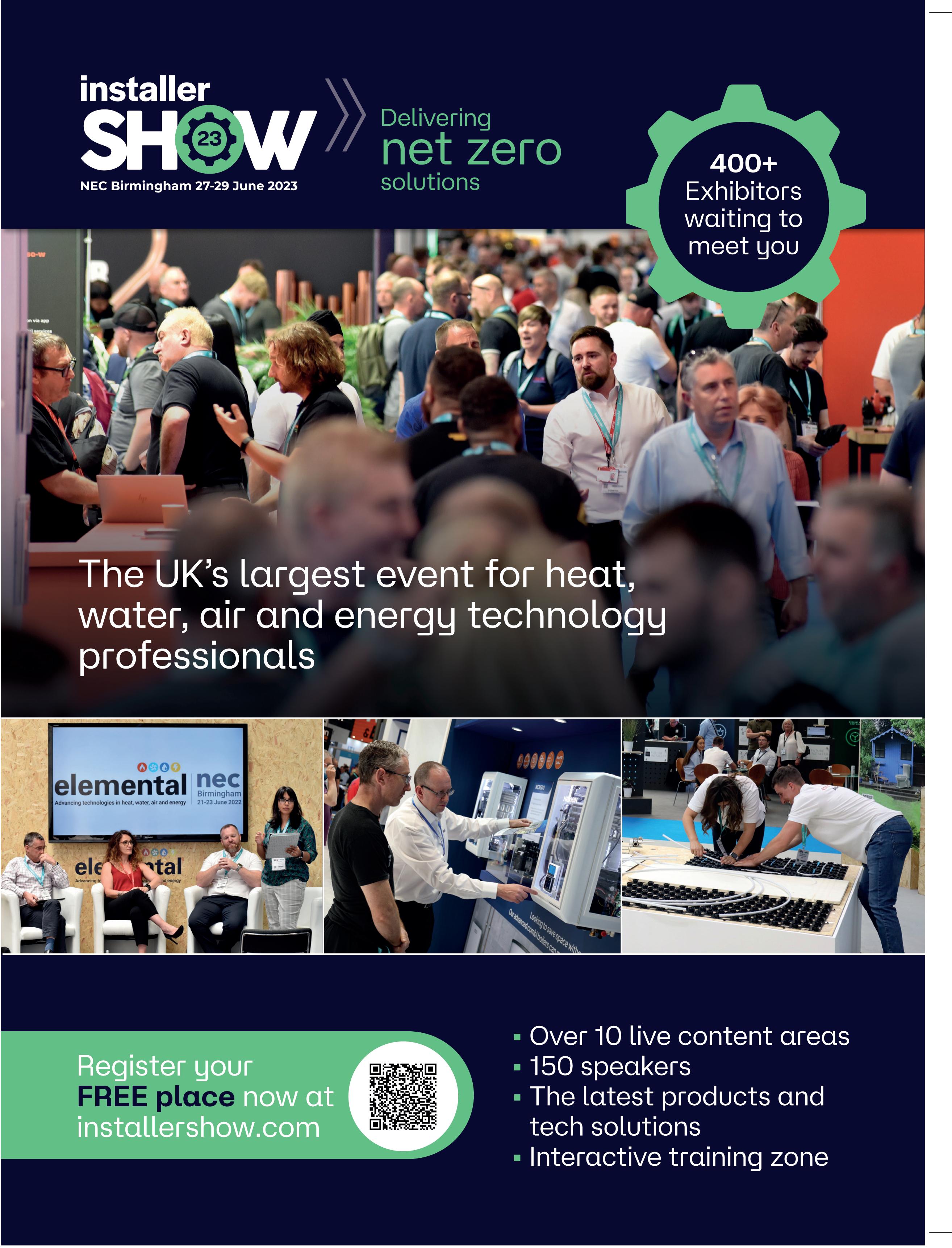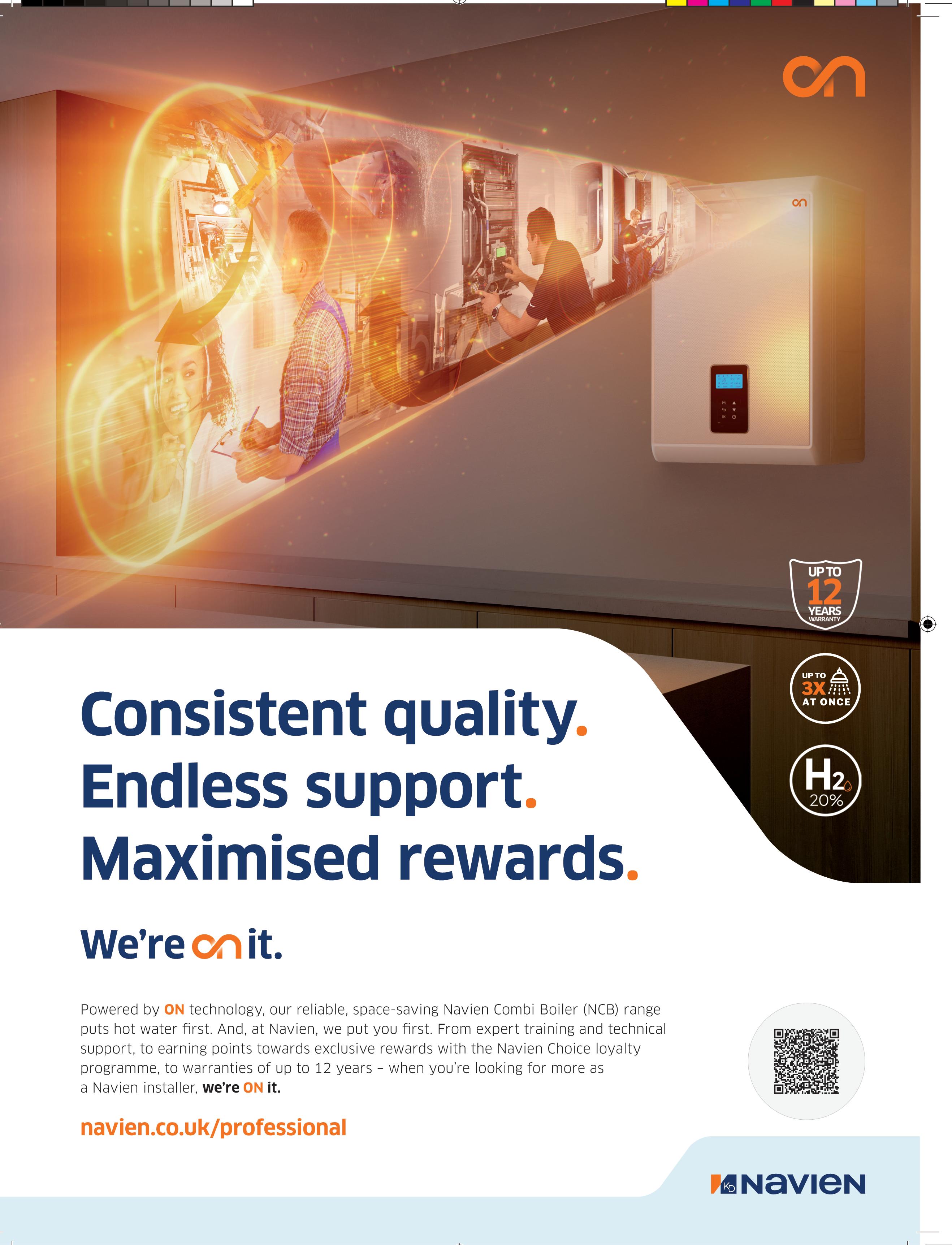TOOLS & EQUIPMENT
KNEE PROTECTION
COMMERCIAL VEHICLES


PROTECTYOUR TOOLS
ROOM
HEATING &UFH
OPTIONS FOR LOW CARBON HEATING





KNEE PROTECTION


PROTECTYOUR TOOLS
ROOM
OPTIONS FOR LOW CARBON HEATING




24 HEAT PUMP INSTALLATION REGULARS
5 VIEWPOINT
6 NEWS
10INDUSTRY INSIGHT
26 BRIGHT BUSINESS 43 PLAYTIME
44 HORROR SHOW
46 CIPHE UPDATE
12GO WITH THE FLOW
We speak with Salamander Pumps about its new TankBoost system
14 BLENDED LEARNING
A look at some of the most popular training options available from Glow-worm
16A SOLID APPROACH
HETAS urges installers to keep all solutions in mind when delivering heat to key rooms in a home
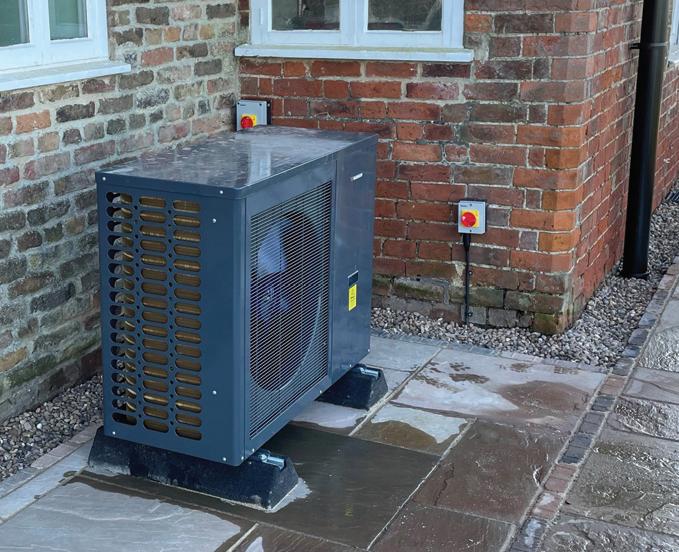
18 THE LOW DOWN
Omnie’s new overlay UFH system –LowBoard 2
22 FITTING A FILTER
20 LOW CARBON HEATING - WHAT DO I NEED TO KNOW?
Baxi’s Renewables Director looks at the immediate, medium and longer term options for low carbon heating
22 INSTALLING A DIRT & AIR FILTER
Altecnic runs through the installation of a Caleffi XF Dirt & Air Filter

24 LINK UP TO LOW CARBON
Low carbon heating has been installed at a 100 year-old cottage
28 ‘AUTHENTIC’ LOOK Carhartt is a workwear brand founded in 1889 in Detroit, Michigan. PHPI finds out more...
30 MEASURE UP
Testo shares its take on the top five HVAC measurement instruments for heating engineers
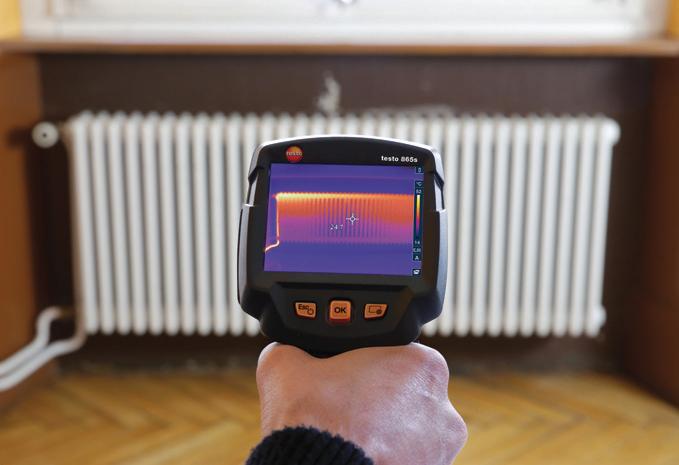
32 KNEE PROTECTION
How trades professionals can protect their knees while working on site

34 STRONG CONNECTION
Knipex’s new crimping tools to help installers keep connections in line with standards
36 A CLEVER COMBINATION
Makita UK has added a new Combo Kit to its range of LXT products
38PROTECT YOUR VAN AND TOOLS
Use technology to deter thieves, protect your tools and safeguard your business
40 INTERNAL RACKING
Rhino Products is launching its first internal van racking product
41TIME TO GO ELECTRIC?
Volkswagen’s digital tool could help you decideif it is the right timetoconsideran EV
42VAN FINANCE
Capital Fleet Solutions provides some of its ‘top tips’
30 MEASUREMENT TOOLS
45 Form joins Mira’s range of mixer showers
47 Viessmann’s new Vitovolt 300 solar PV system
48 Workwear, hand tools, radiators, boilers & more...

EDITOR
JONATHAN COLE phpi@hamerville.co.uk
ADVERTISEMENT MANAGER

OLIVER SHANNON oshannon@hamerville.co.uk
ASSOCIATE RAY SUITTERS rsuitters@hamerville.co.uk
ADVERTISING EXECUTIVE PATRICK MOORE pmoore@hamerville.co.uk


DIGITAL MANAGER KELLY NEWSTEAD DESIGNER
GEMMA WATSON
GROUP PRODUCTION MANAGER CAROL PADGETT DISTRIBUTION MANAGER
KARL CLARK
PRINTED BY WALSTEAD PETERBOROUGH LTD
PUBLISHED BY HAMERVILLE MEDIA GROUP Regal House, Regal Way, Watford, Herts WD24 4YF.
Tel: (01923) 237799
Fax: (01923) 246901
Copyright © 2023
PROFESSIONAL HEATING & PLUMBING INSTALLER is a business journal for those involved in the installation, maintenance and repair of heating and plumbing systems. It is available to the trade at leading heating and plumbing merchants and specialist outlets throughout the UK.
Getting to and from the job is both a vital and an everyday task for any tradesperson – and the combustion engine powered van has been a trusted and reliable workhorse for decades. But with the drive towards Net Zero emissions impacting transport just as much as it is the heating sector, a move away from petrol- and diesel-powered vehicles is already underway.
Hybrid and electric cars are an increasingly common sight on roads and motorways across the country. However, when it comes to Light Commercial Vehicles (vans) the story is a little different.
16,744 battery electric vans (BEV) were registered in 2022, according to the Society of Motor Manufactures and Traders (SMMT), representing less that 6% of all vans joining UK roads last year.
Van drivers and buyers remain concerned about charging times, range, cost and the availability of van-friendly charging locations. An SMMT survey conducted in May 2022 indicated that more than half of van owners are discouraged from switching to an electric van due to a lack of charge point infrastructure.
The SMMT has said action is needed to deliver van-suitable charging infrastructure and a fiscal framework to encourage more van drivers to make the switch.
A certain amount of assistance is already available. The government is providing some financial assistance to encourage van buyers to make the switch; the Plug in Van Grant (PIVG) can provide a grant of up to £2,500 for small vans and £5,000 on large vans, although specific criteria must be met.
Vehicle manufacturers are gradually offering plug-in versions of their vans and, in this issue, we hear how Volkswagen Commercial Vehicles has introduced a new digital tool - its Van Fuel Advisor (EV4me) - which has been put together to help businesses compare annual costs and indicative emissions of combustion engine, plug-in hybrid and fully electric vehicles. To read more please turn to page 41.
Whilst some van buyers have already embraced electric vans, many more still need persuading. To meet Net Zero targets in the transport sector, van manufacturers, together with the government, must continue to innovate and support van users and buyers in the move away from fossil fuels.
Jonathan Cole EDITORThe publishers and editor do not necessarily agree with the views expressed by contributors, nor do they accept responsibility for any errors of translation in the subject matter in this publication.
Subscriptions to PHPI are available for 1 year (11 issues) at the following rates:

UK £30 post paid Airmail £80 post paid Europe £50 post paid
50,096
(Certificate of Average Distribution for the issues distributed between January and December 2021)
Want
According to research commissioned by Intergas Heating Solutions in February 2023 over 70% of installers want to install heat pumps but aren’t trained to do so, and 95% don’t have the Microgeneration Certification Scheme (MCS) accreditation necessary to access the BUS grants (or the Smart Export Guarantee) on behalf of their customers.
When asked which renewable heating system they’d choose for their own home (between air source heat pump, ground source heat pump, an electric boiler or a hybrid system), 74% said they’d rather fit a hybrid heating system.
Speaking about the research, Terri Hickman, Intergas Marketing Communications Manager said: “There’s a lot of assumed knowledge about our industry and we wanted to ask installers directly how they felt about specific environmental issues, especially now as we’re all having to cope with increased economic pressures. The information we’ve gained will help inform our decisions going forward.”
Share your thoughts with us on the industry via Twitter (@PHPI), Facebook (@ProfessionalPlumber), or by emailing phpi@hamerville.co.uk

Pump industry leaders are calling on the government to clamp down on the “swarm” of non-compliant central heating pumps being imported into the UK potentially costing consumers hundreds of pounds every year.
The appeal is being driven by concerns that exporters have penetrated the traditional merchant distribution channels with more than 100,000 non-compliant pumps being sold in the UK every year.
Steve Schofield, Chief Executive of the British Pump Manufacturers Association (BPMA) said: “We estimate that circa 10% of the one million central heating pumps, technically known as circulators, being brought into the UK are non-compliant. It is a swarm; it is blatant and it is now over-the-counter. Once fitted, they are costing consumers hundreds of pounds every year on their heating bills, and it is seriously impacting the UK’s ability to meet its net zero obligations.”
He continued: “The imported pumps use old-style AC motors that are less than half the price of permanent magnet motors equipped with microchips to vary the speed of the pump to reduce energy consumption. The non-compliant 3-speed pumps use circa 100 watts of energy compared to 30 watts for the permanent magnet design.”
Lee Tebbatt, Managing Director at Wilo UK and incoming Vice President of the BPMA, says that the key problem is in the stand-alone pump replacement market. “The stand-alone market, where a non-condensing boiler is being used with a hot water cylinder and header tank, is the target for non-compliant pumps. Typically, this market is circa one million units per year.”

Mr Schofield continued: “It is the legal responsibility of the importer to ensure that only compliant pumps are brought into the UK. However, legal responsibility does not stop there. It is the distributor’s responsibility to only sell CE marked pumps and it is the installer’s responsibility to ensure that what they are fitting is compliant.”
To help connect homeowners looking to improve the efficiency of their heating system with trusted heating engineers, Spirotech has introduced a new ‘Find an Installer’ tool on its Better Heating consumer website.
Helping to generate customer leads for heating engineers, the new Find an Installer tool has been introduced to the educational Better Heating website, which provides information on how air and dirt separators work, their benefits and the symptoms of a contaminated system. The new Find an Installer tool has been introduced to bridge the gap between homeowners who are actively learning about the benefits of air and dirt removal, and knowledgeable installers in their area.
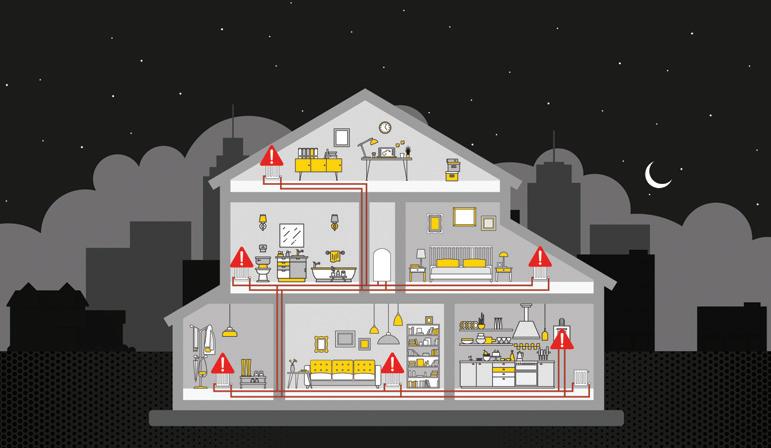

Training provider, Logic4training, has added new ‘business ready' modules to some of its training programmes to ensure candidates hit the ground running when it comes to finding and winning work.
New entrants who complete one of Logic4training's plumbing packages or gas Managed Learning Programme (MLP) will round off their training with a series of free modules covering the essentials of setting-up and running a successful business. Delivered online, the courses go-over the business skills that tradespeople need to reach their potential in an evolving sector.
Mark Krull, Managing Director at Logic4training, said: "Most tradespeople feel confident with the practical side of the job, but often come unstuck when it comes to things like administration, tax, marketing and even getting paid. That's one of the reasons why we have focused on strengthening our wrap-around support beyond the training experience, ensuring that not only do our candidates thrive in the learning environment, but they also have a successful career.”
As part of a commitment to ‘Keeping Britain Glowing’, Glow-worm has unveiled its new logo.

The logo will replace the company’s existing logo, which has been in place for more than 10 years. The new logo will become a familiar sight on Glow-worm boilers, heating controls and accessories from 2024. Alice Woolley, Director of Marketing at Glow-worm said: “At Glow-worm we pride ourselves in offering exceptional heating solutions. As part of our continued investment into the brand we’re delighted to be unveiling our new logo that builds on our 89-year heritage, but also gives a nod to the fresh thinking and innovation synonymous with our products that help installers keep UK homes glowing.”
Baxi will be supplying its 100% hydrogen boilers for the H100 Fife Project, a hydrogen-to-homes demonstration delivered through a partnership between gas distribution company SGN and Fife Council in cooperation with industry regulator Ofgem.
Due to open to the public this summer, the new facility will comprise two hydrogen show homes where visitors will be able to try out domestic hydrogen appliances, including Baxi’s 100% pure hydrogen boilers.
Karen Boswell, Managing Director of Baxi UK and Ireland, said: “We are thrilled to be providing our 100% hydrogen boilers to another innovative, world-first demonstration project.”
New rural polling, on behalf of trade association Liquid Gas UK, shows 58% of homeowners not connected to the mains gas network feel the 2026 fossil fuel ban is unfair compared to the 2035 Government ambition to phase out fossil fuels for those on the gas grid. When asked if the policy should be abandoned, almost 60% said it should.
The survey also showed that 69% of households may be unable to afford a new electric heating system. George Webb, Liquid Gas UK CEO, said: “Government urgently needs to re-think its 2026 boiler ban for homes not connected to the gas grid and ensure we’re offering rural communities a choice in how they decarbonise, and ultimately, heat their homes. As an alternative to electric technologies, Government should consider the benefits of renewable liquid gases, which are a low-carbon and drop-in alternative to LPG, in a mixed energy approach.”

Glow-worm is encouraging installers to earn points for its next Mystery Trip. The trip, which rewards its Club Energy installers has become a firm favourite in the company’s calendar. Installers can earn points for every Glow-worm product they install and register via the company’s customer loyalty platform, Club Energy.
The Mystery Trip is open to all Glow-worm Club Energy installers. Qualification is personalised, meaning no matter how many boilers they install and register, whether it’s 30 or 100, every Club Energy installer has the same opportunity to earn their place on the Mystery Trip.
There are four different stages in total, and as installers reach each one, they can decide whether to continue to earn points towards grabbing a spot on the Mystery Trip, or receive the cash prize on offer.
Steve Cipriano, Commercial Director for UK & Ireland at Glow-worm said: “It’s always great to reward our installers for their loyalty and hard work, and the Mystery Trip is a brilliant way to do this as not only can installers work towards securing a place on the trip itself, the guaranteed rewards at every stage, means everyone’s a winner.”
To find out more about the Glow-worm Mystery Trip or to register please www.rdr.link/pat001
Funded through Jersey Government's Retrain initiative, Highlands College has launched a net zero training facility.
The facility has been developed in partnership with and under the guidance of GTEC to provide the resources required to train and assess candidates in the installation of a range of technologies, including Air Source Heat Pumps (ASHPs).

Griff Thomas, MD of GTEC Training Ltd, said: "We have been delighted to help setup and deliver training in partnership with Highlands College, there are some ambitious targets in Jersey for carbon reduction and this has to be underpinned by ensuring that installers have access to the high quality training that they need, without having to leave the island."

Flexigas, the manufacturer of CSST systems and gas installation products, is rewarding its customers by offering them the opportunity to win a holiday for two to Fiji with its latest promotion. The prize includes a 10-day stay for two adults at the Beach Front Pool Bure at Tokoriki Island Resort in Fiji, return flights from the UK and transfers to and from the island. All meals are also included.
To enter customers will need to spend at least £50 on Flexigas products to earn one entry into the draw. Customers will also earn an extra entry for every subsequent £50 spent. The promotion is open until midday on 30th November 2023, with the winner being drawn live under the supervision of an independent person on 4th December 2023.
For further information and full terms and conditions please www.rdr.link/pat002
The latest figures from the Plumbing & Heating Merchant Index (PHMI) report show total value sales for January 2023 through specialist plumbing and heating merchants were +13.4% higher than January last year. Price inflation rose +11.6% over the same period, while volumes increased just +1.7%.
Mike Rigby, CEO of MRA Research, which produces the report, commented: “2023 has started in much the same vein as 2022 for specialist Plumbing and Heating merchants with the PHMI data showing that is largely led by price inflation, as volumes inch forward. The biggest opportunity to drive volumes up this year must come from energy and water saving products. In the short term we are seeing homeowners with savings upgrading their properties to reduce monthly outgoings while energy bills are high.”
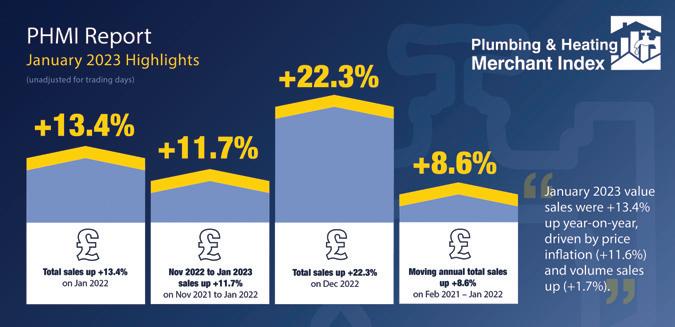


everywhere, all at once.”
This is a message that the Unified Water Label Association endorses and is why we are promoting the Unified Water Label as a smart solution that can help consumers use less water in the home. The Unified Water Label empowers consumers to make choices favouring more water efficient fixtures and appliances, without compromising on quality of experience.
The Unified Water Label is a voluntary, industry led scheme, which is simple, clear and concise. It is supported by over 160 brands, with around 16,000 products currently registered. Governments also recognise the Unified Water Label as the lead water labelling scheme. It is referenced within the ISO 31600 published mid-year 2022, the grades are recognised within the EU Taxonomy, and it is


referenced within Portugal’s building regulations. Most recently the UK Energy Technical List incorporates the Unified Water Label within their new criteria for showers.
Plumbers and installers have a unique opportunity, to promote products that utilise the Unified Water Label, especially in this period of rising energy costs, high household bills, and with more heatwaves and droughts expected. By helping to raise awareness of the relationship between heating water and energy bills, plumbers and installers can help homeowners use water efficiently and save money.

This is demonstrated by considering the








just the one shower. This is about 70% of the daily target, not leaving much for all the other washing/ WC flushing that takes place on a typical day. Choosing a state-of-the-art shower that uses 10 litres a minute, or less and spending less time in the shower, say four minutes, can further reduce usage. A four minute shower using 10 litres per minute equates to only 40 litres, less than half of the 84 litres of the current typical shower and less than a third of the daily target of 125 litres per person.
The UWLA is committed to working with plumbers and installers, supporting them to drive forward this message. Our Installer packs are proving to be popular as they help consumers understand the link between using water, energy and their carbon footprint. The pack includes a range of tools, flyers, posters, social media posts and videos, with tips and advice on how to save water in the home. The packs are FREE and easy to download from the UWLA website. Please www.rdr.link/pat004
For more information about the Unified Water Label please www.rdr.link/pat005
Plumbers and installers have a unique opportunity, to promote products that utilise the Unified Water LabelYvonne Orgill
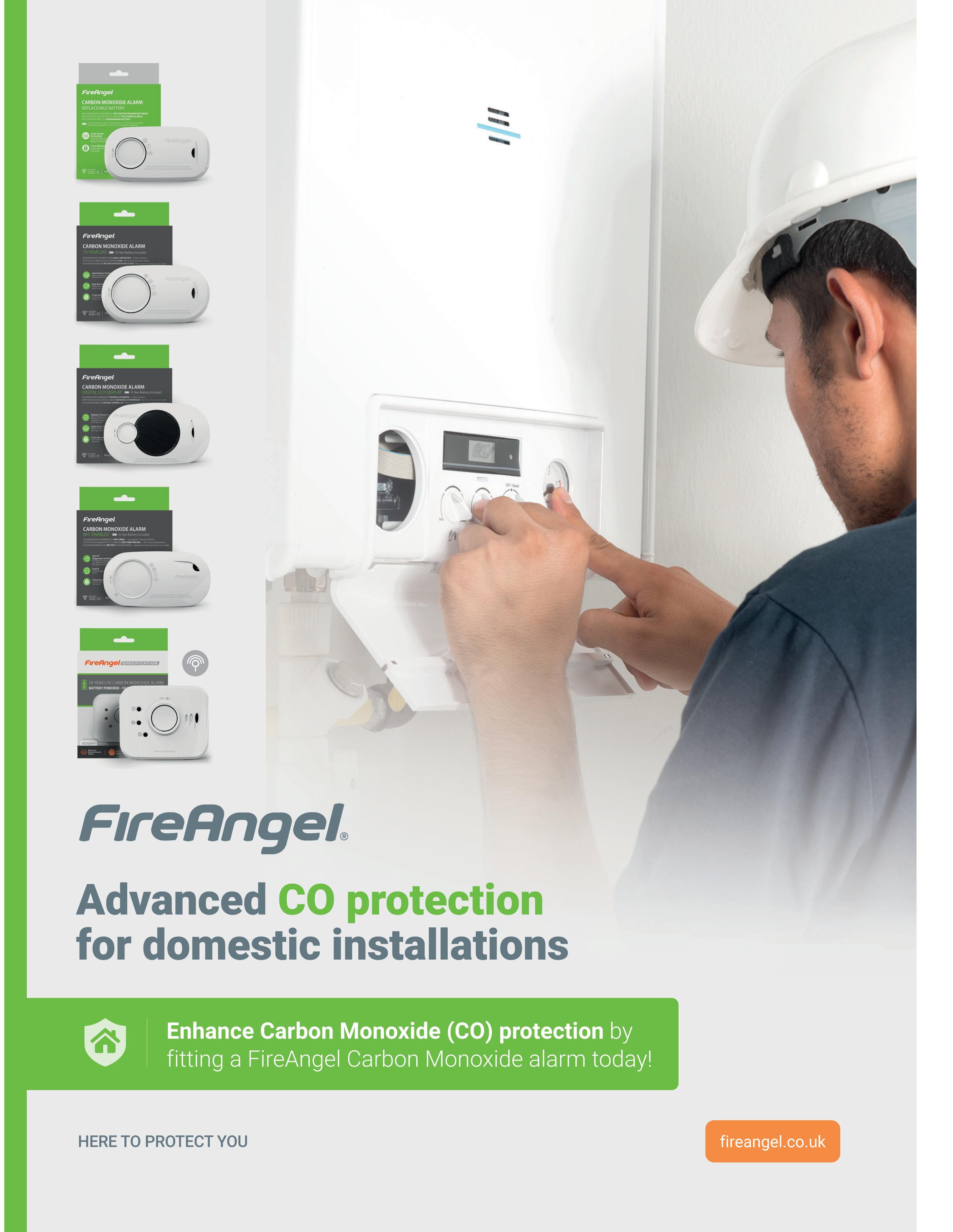
Following the launch of its new TankBoost system, Mike Oxley, Training Manager at Salamander Pumps, chats with PHPI about how the new solution can help properties with low mains water flow/pressure.
Q Why has Salamander Pumps introduced TankBoost?
Salamander Pumps designed and developed TankBoost to be the perfect solution to properties with low mains water flow/pressure or restricted mains pipework where a water supply is required above 36l/min, for multiple outlets to be used across multiple floors – all at the same time.
A single unit solution, TankBoost is suitable for overcoming insufficient water pressure and flow in combi or
toilet, kitchen tap…).
An increasing number of old gravity fed systems are being replaced by mains fed water systems, such as combi boilers and unvented systems. However, the efficiency of an upgraded mains system will depend on the mains supply feeding it.

In cases where households and properties require a large amount of water, the main supply may frequently be insufficient to meet the required demand.
The water pressure and/or flow can be negatively affected when multiple outlets are used simultaneously, especially on higher floors of a property, such as a loft conversion with an ensuite. This can result in poor performance and make it difficult to extend the property with additional bathrooms.

TankBoost has now been brought to market to fulfil the fundamental need to optimise water performance to multiple outlets in large, multi-storey properties.
How does TankBoost help to improve water flow and pressure?


TankBoost is an all-in-one unit made up of a water storage tank and integrated submerged pump. It will increase both
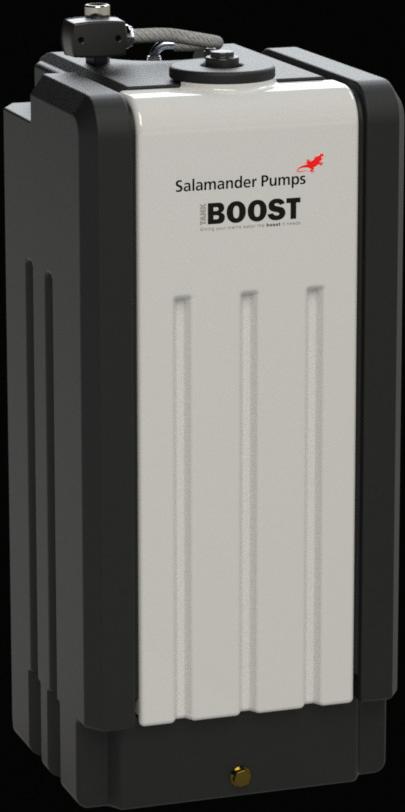
pressure and flow, delivering up to 3.0 bar and 80L/min.


In large, multi-storey properties, TankBoost overcomes water performance issues by providing additional cold-water storage boosted by the integral submersible pump.
Even suitable for use with a restrictive incoming main water pipe (typically lead mains), TankBoost has been designed to meet the water pressure and flow needs of domestic and light commercial installations, with four tank sizes available ranging from 100L to 450L, increasing both pressure and flow. This generous flow rate is typically higher than the average domestic property would require, meaning it can easily handle multiple showers operating at once, for example.
Additional storage tanks are also available to increase capacity for large properties with higher water flow demand or those with particularly low incoming flow rates.
A single unit solution, TankBoost is suitable for overcoming insufficient water pressure and flow in combi or unvented systems, in mains fed systems.
QWhat level of performance can it deliver?
TankBoost does not rely on the incoming mains pressure as it uses a submersible pump to deliver the pressure and flow required for each outlet.
Therefore, where the water flow required is in excess of 36 L/min and pressure required in excess of 2.0 bar, TankBoost will ensure optimal water performance by delivering flow rates up to 80L/min and pressures up to 3.0 Bar.
As water is replenished when in use, the product is ideal for even the busiest homes where showers, taps, toilets and more are being used at the same time.
QWhat is the size of the unit and whereabouts can it be sited?
With 100L, 200L, 350L and 450L sizes available, TankBoost has been developed to enable the correct amount of water storage for each application.
Designed with appearance in mind, TankBoost has a sleek front fascia, making the product more aesthetically pleasing than other products of its kind currently on the market. Coupled with its flexibility in terms of water storage, usage requirements and availability of space, TankBoost can fit within 600mm tall larder units,
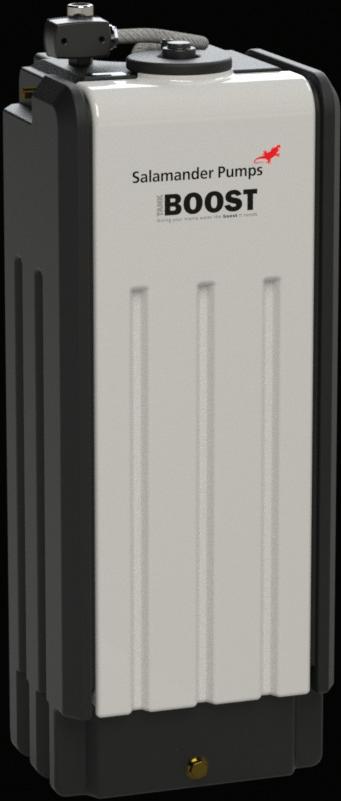
■ TankBoost from Salamander Pumps can increase water flow to 80L/min and pressure up to 3.0 Bar
■ It can deliver flow rates beyond 36L/min and is suitable for use with a restrictive incoming main water
■ Tankboost is able to boost multiple outlets across multiple floors at the same time
■ Initially available in four different sizes, from 100L to 450L
■ Available from April 2023
storage cupboards and pantries without comprising space within the property. For installations where the product cannot be hidden, TankBoost’s white front fascia panel provides the appearance of a domestic appliance fitting that can be found in a kitchen or bathroom setting.
Although the typical application for the product is a larger dwelling, with several floors and bathrooms, TankBoost can also service smaller properties due to its compact size.
QAs TankBoost is increasing the flow and pressure, what level of noise does it make?
As TankBoost is fitted with a high-quality stainless-steel, centrifugal pump submerged within the tank, the product remains extremely quiet throughout operation.
QIs TankBoost suited to both domestic and light commercial applications?

As TankBoost is available in four different sizes, from 100L to 450L, the product is capable of servicing properties of all sizes. Where a property has particularly high water demand, and space is not an issue, tanks can be linked with additional storage units to increase capacity.
CAT5 variants and additional water storage tanks are also available as part of the range, enabling it to be the perfect solution for commercial applications as well.
QUp to what size of project would TankBoost be an appropriate solution?
With its ability to handle mains water flow and pressure for larger properties wanting to run multiple outlets at once, TankBoost is suitable for detached family homes of four or more bedrooms, story town houses with loft conversions, properties with multiple ensuites, HMOs, social housing settings, boutique hotels and B&Bs.
For more information please www.rdr.link/pat006
TankBoost has now been brought to market to fulfil the fundamental need to optimise water performance to multiple outlets in large, multi-storey properties.
Training is not just about increasing product knowledge; professional training can also support installers in becoming more confident when recommending products or services to customers, or even in spotting additional opportunities to upsell. Mark Wilkins, Technologies & Training Director for UK & Ireland at Glow-worm looks at some of the most popular training options available from Glow-worm, and how its move towards a blended learning approach is offering real benefits to installers.

QWhich courses are installers most interested in at the moment?



Our most popular courses cover a variety of topics, from installation and commissioning our Energy boilers, to diagnostics and fault finding, right through to commissioning a Glow-worm gas appliance. These courses all help installers in ensuring that they are equipped with the knowledge they need for today and into the future. We want to make sure we’re doing everything we can
to help installers 'Keep Britain Glowing’ and staying up to date with new technologies and theory is part of this. As a result, we’re continuing to invest in our training offer to ensure that installers can access the support that extends beyond product alone and instead looks at wider topics that are affecting our industry.
Last year, Glow-worm elevated its online training offer with the introduction of the Glow-worm Academy – an online portal that allows installers to follow a tailored learning journey.



QWhen attending a course in person how 'hands-on' is your training?
57%


In addition to more practical time to familiarise themselves with the products, our in-centre training also allows installers to put our trainers to the test and ask any additional questions they may have.
QFrom your experience which topics do installers need the most assistance with?


Understanding controls is becoming increasingly important for installers in terms of achieving energy efficiency. As a result, we’re seeing more installers prefer to be hands-on with the controls, through in-person training.

We also see installers requiring assistance with the boiler interface and how to optimise the boiler and system.
We have a range of courses available via the Glow-worm Academy that cover these areas to help installers develop the skills they need, including Controls Overview and Controls Wiring, as well as Control Setup & Use.
QVirtual training has developed significantly over the past few years, would you recommend it as an option for a busy installer?
Online learning has continued to grow in popularity, with 47% of our installers completing online courses in 2022. However, we’re also seeing an increase in the number of installers seeking face-to-face training again, with 57% of all courses delivered in 2022, hosted in-person at one of our six Centres of Excellence.
A blended learning approach enables installers to complete their theory modules
in the comfort of their own home and book an in-person course to concentrate on the practical elements. This helps cut down on the time they need to take away from the tools whilst ensuring a rich learning experience. With online learning becoming more readily available, installers can also use this as an opportunity to invest and grow their business.
There is also wider business support available to installers as Glow-worm continues to invest in the Glow-worm Academy. Our latest courses that focus on soft skills, such as marketing, are designed to equip installers with the knowledge they need to further boost their business.
For more information please www.rdr.link/pat007
To access the Glow-worm Academy, Club Energy installers need to log in to the platform using their Club Energy credentials. New customers can access Glow-worm Academy by signing up to Club Energy. Please www.rdr.link/pat008

We also see installers requiring assistance with the boiler interface and how to optimise the boiler and system.
Whilst many homeowners remain reliant on gas or electric heating, Calvin May, Head of Technical Services for biomass and fuel standards organisations HETAS and Woodsure, is urging installers to be equipped with the knowledge on the variety of solutions available when delivering heat to key rooms within the home.
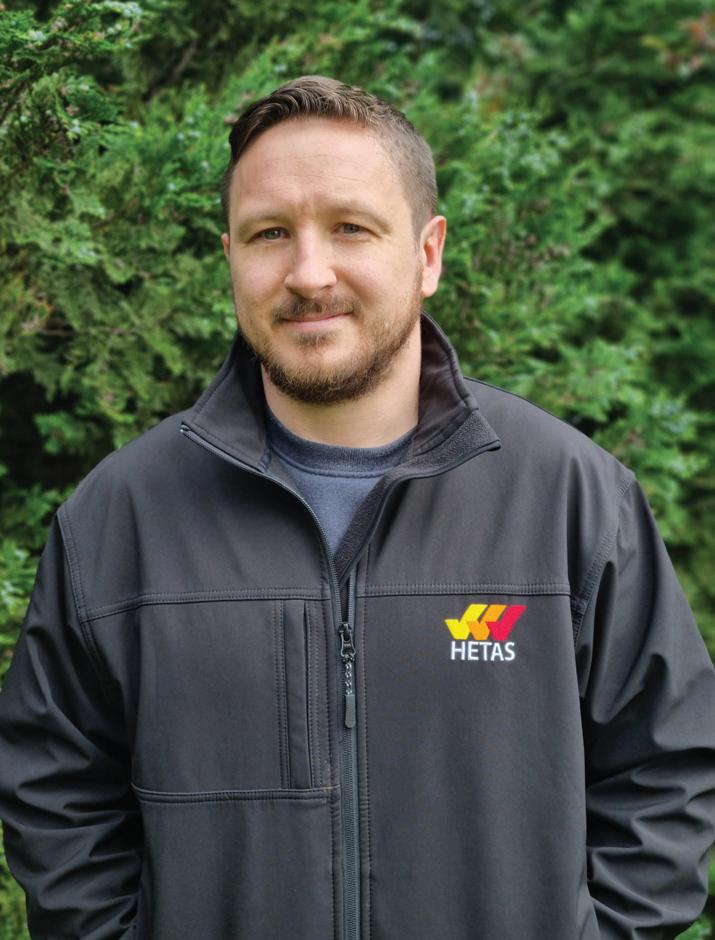
This winter, we have unsurprisingly seen an increase in demand for solid fuel heating. According to the recent BEIS Public Attitudes Tracker, the use of gas central heating has dropped to 57% (down from 78% the previous year). This suggests a shift in behaviour from heating methods which heat the whole home to those that can be used to target individual rooms.
When it comes to heating one room, there unfortunately isn’t a simple ‘one size fits all’ answer. The decision on how best to heat our homes will depend on a variety of factors. This is where heating engineers and installers alike will play a pivotal role in supporting their customers to understand the best solutions available to them.


With energy bills and low carbon heating high on the agenda, solid fuel heating appliances offer a cost-effective solution when looking to heat just one room. With a multitude of options available
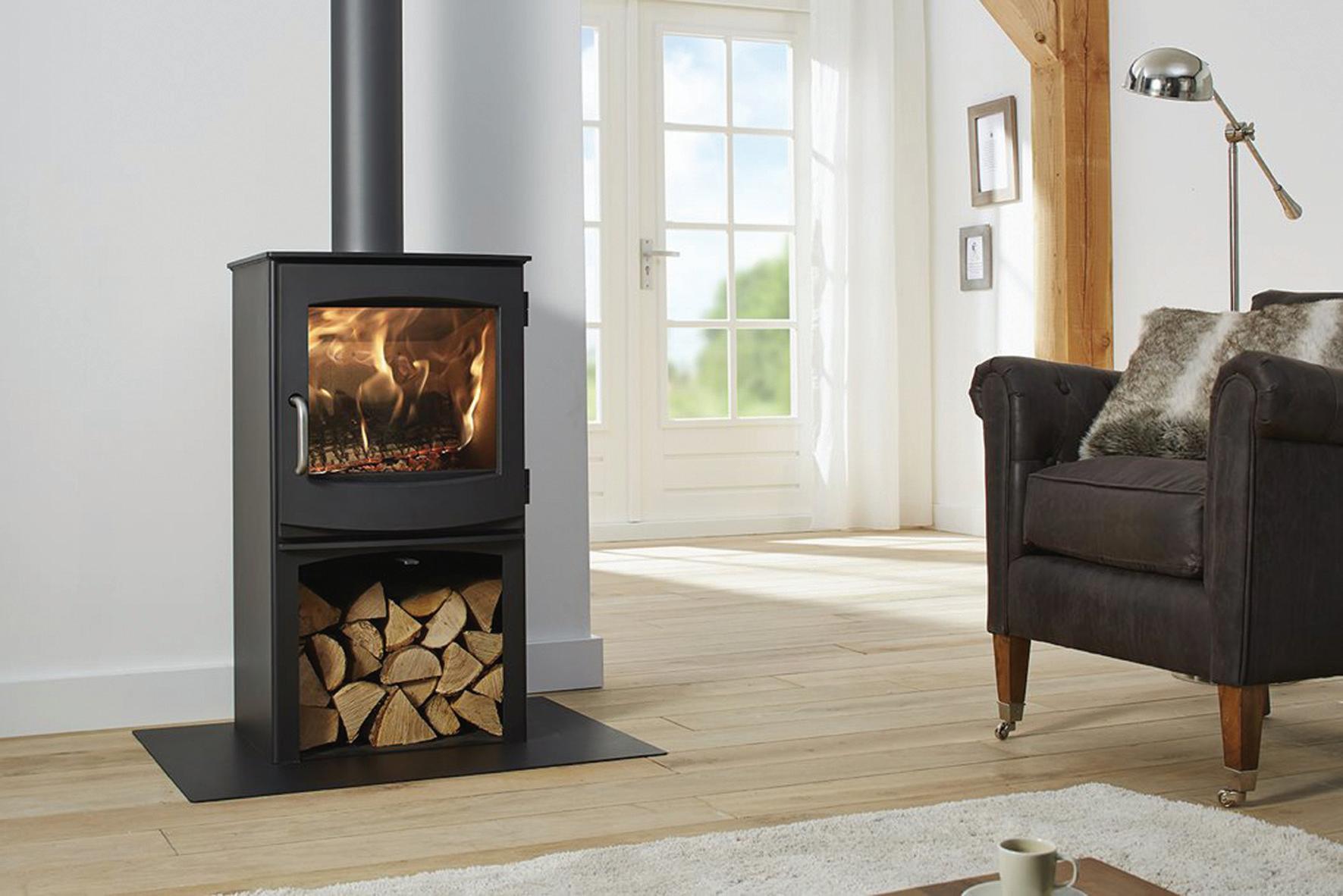
on the market, installers will need to take a whole host of factors into account including: the age and construction of the property; the types of windows and insulation the home has; whether there is an existing chimney; and where the customer would like the new stove located.

Installers can support homeowners to make more informed choices during an on-site assessment survey. One of the main considerations to take into account would be sizing the appliance correctly for the room in which it is situated to maximise heating efficiency.
Oversizing of an appliance simply to satisfy the aesthetics of a larger existing recess/fireplace chamber will mean that users may be tempted to turn down the appliance to levels outside of those recommended by the appliance manufacturer, which may result in incomplete combustion. Using the stove in this way also increases the risks of creosotes being formed in the flue, resulting in chimney fires or blockages if operated outside of the air control guidelines set by the appliance manufacturer.
One of the main considerations to take into account would be sizing the appliance correctly for the room in which it is situated to maximise heating efficiency.
Another consideration is whether the home already has underfloor heating (UFH) installed. Any solid fuel appliance will require a hearth upon which it’s installed. Due to the complexities with the associated pipework underneath, we would not advise positioning a solid fuel heating appliance alongside this setup as the additional material may have an adverse effect on the pipes or cabling below.
Installers should advise homeowners to speak to their UFH manufacturer to determine whether any system can take both the temperatures and weight that a solid fuel heating appliance and hearth generates. In most cases however, these two systems would not be compatible.
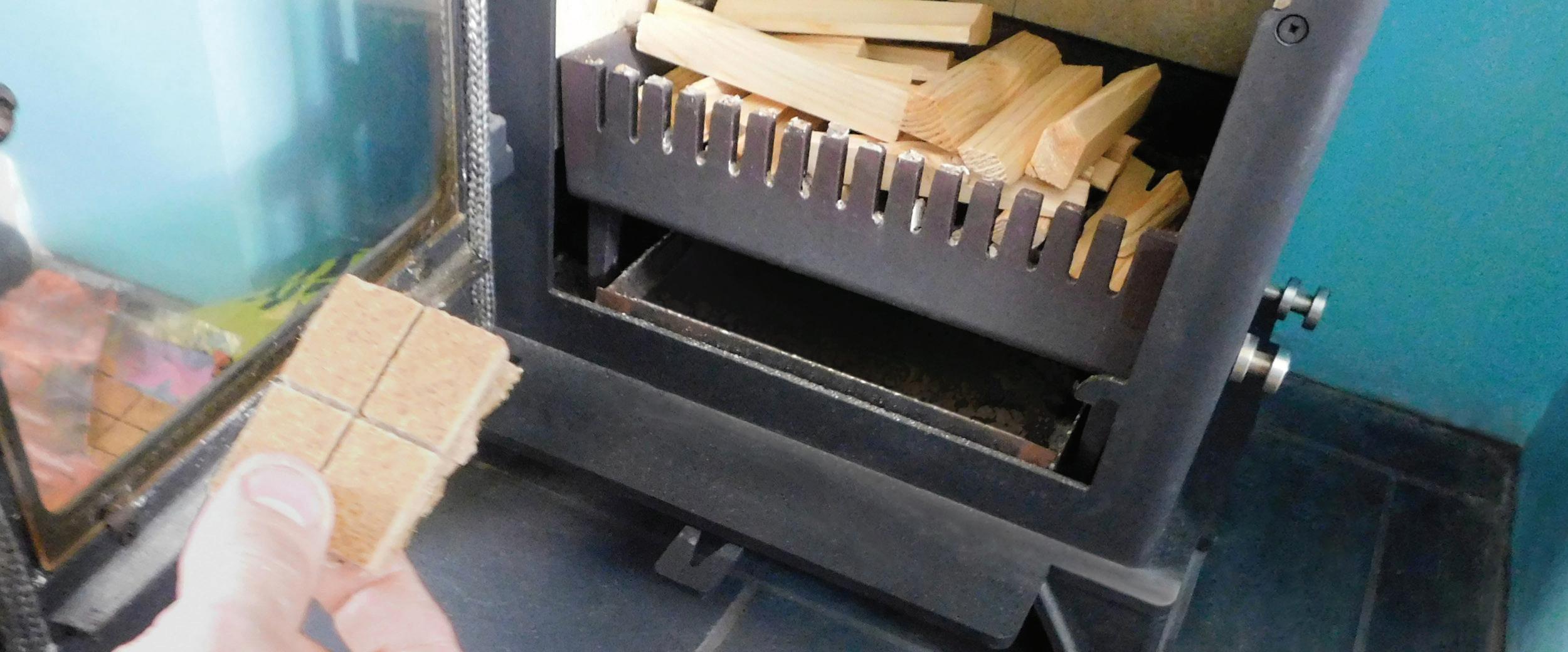
The Cleaner Choice Approval Scheme is an initiative designed to allow consumers to make more informed choices around appliance selection. All Cleaner Choice stoves and other appliances meet the necessary legislation for installation in the UK, CE (UKCA) marking and building regulation compliance, whilst at the same time requiring a 50% improvement on current particulate limits for the most stringent requirements in the UK and promoting the best available technologies in relation to reducing particulates.
When thinking about heating one room, an existing open fire will have an efficiency of around 40%. This effectively means that only 40% of the fuel being burned is utilised for heating the room, with the additional 60% being lost up the chimney. In comparison, a Cleaner Choice appliance can deliver an efficiency rating of up to around 80%. These models utilise the fuel far more effectively and economically, generating a greater amount of heat from the same
80%




homeowner on how the rest of the house may be affected. While we know that a wood burning stove is much more effective at spreading heat around the room than an open fire is, the rest of the home should not be overlooked. Removing all of the heating from less-frequented rooms runs the risk of damaging the fabric of the property during cold or damp spells.
Alongside appliance selection, installers should be recommending the appropriate fuels suitable for the appliance, as required by the appliance manufacturer. All appliances designed to burn wood-based fuels should utilise Ready to Burn certified fuels, with installers ideally advising their customers to look out for the Ready to Burn logo when purchasing wood fuels.
Fuels clearly labelled with the Ready to Burn logo means that they comply with Air Quality (Domestic Solid Fuels Standards) (England) Regulations 2020 which aims to reduce particulates from solid fuel
domestic burning. The Ready to Burn scheme does this by making sure that wood sold in volumes of less than 2m³ is certified as having a moisture content of up to 20%; or, when sold over 2m³, that appropriate instruction is passed to the consumer on how to correctly season the fuel before use.
It can be all too easy amidst the current cost-of-living crisis for householders to veer away from central heating across the whole home and instead heat just one or two key rooms as required. Installers play a vital role here in ensuring that the appliance is fit for purpose when heating the bare minimum and that it is not to the detriment of the rest of the home.
This comes down to assessing the customer’s requirements and homing in on three key factors:
● An appliance which is fit-for-purpose

● Fuel which is certified and appropriate to the burner
● Ongoing maintenance pointers to keep everything operating as safely and efficiently as possible
By doing so, installers can really prove their worth to their clientele and forge customer loyalty by being proactive in sharing any money-saving pearls of wisdom they have at their disposal.
For more information on HETAS please www.rdr.link/pat009
For more information on Woodsure please www.rdr.link/pat010
For more information on Ready to Burn please www.rdr.link/pat011
LowBoard was launched into the market in 2012, and a little over ten years on the company has now introduced a new, low profile, overlay panel, LowBoard 2.
The solution consists of routed lower and upper panels with a combined profile of just 18mm - the company believes it is the thinnest overlay system on the market. Its predecessor, LowBoard, had a lower panel profile of 15mm but, like other overlays, LowBoard also required a ply upper layer which can add around 6mm to its overall depth.


Omnie says that LowBoard 2 has a 15% higher heat output than its predecessor: its lower and ‘over’ panels have pipe channels that tightly sandwich and encapsulate the warm water pipe. The routing follows Omnie’s patented multi-directional pipe channel pattern, eliminating the need for separate straight and loop panels while also allowing the warm water pipe to be laid around any planned room layouts. The channels are spaced 150mm apart for optimal heat output and transfer.
The upper ‘over’ panel is 6mm thick wood fibre (or 12mm plywood for tiled applications) and the proportional pipe channel pattern places the encapsulated warm water pipe within 3mm of the floor surface.
Bonded to the over panel is a layer of patented aluminium AL HEX foil diffuser with its distinctive hexagonal perforated design. This diffuser technology improves the in-channel, foiled surface area that is in contact with the warm water pipe. The result, according to the company, is greater heat output, better heat transfer and a more even heat distribution that avoids the risk of damage due to heat ‘striping’.
“We’re very excited by how LowBoard 2 could help transform home heating and the requirement for low-carbon energy systems in the future,” said Brendan Hourican, Managing Director at OMNIE. “It’s important that heat pump performance is optimised if we’re to see its widespread uptake across the UK. This will help ensure that running costs are kept low and that homes are comfortably warm in winter. LowBoard 2 is low-temperature, retrofit ready and designed with heat pumps in mind. It can reduce heating bills by up to 20% compared to aluminium spreader plate systems which also use heat pump as the heat source.”

On the top surface of the upper panel is a printed warning exactly matching the pipe pattern to ensure that other trades do not inadvertently pierce the pipes, either when
room fixtures and fittings are being installed (such as kitchen cupboards or bathroom fixtures) or at a future date. At the panel’s edge, the channels are fluted to allow for any small deviations between panels when they are laid that may otherwise result in the pipe being inadvertently pinched.
Installers are also provided with a detailed design plan for the pipework, created by the Omnie team, showing both where the pipes should be laid and which pipe coil length to use for each circuit. This is to help to eliminate the time usually spent measuring up the floor before ordering the pipes, and it avoids any risk of having to join lengths of pipework under the floor covering.
Once laid during first fix, the company says LowBoard 2 can safely be walked on by other trades before being covered by the final floor finish.
For more information please www.rdr.link/pat013



Heat is often referred to as one of the ‘hard to decarbonise’ sectors of our economy. That’s why the heating industry is preparing for its transformation to deliver clean heat, with emphasis often placed on the roles of future technologies, what they are, and what’s available today. Baxi’s Renewables Director, Harriet Evans, looks at the immediate, medium and longer term options for low carbon heating in homes.



Although there is currently much debate about how we will heat homes in the future, the reality is that there is no silver bullet to deliver net zero for the heating and hot water industry. Rather, a reliance on multiple technologies is likely to be key, with the general consensus seeming to be that heat pumps, hybrid systems, heat networks and in the longer term hydrogen, will all play their part in the process. But what are the most important aspects that heating engineers need to know about each of them now?
The popularity of domestic heat pumps is finally gaining momentum but there remains plenty of work to be done when it comes to educating installers and homeowners on the technology. Using refrigerant technology to heat hot water, radiators and underfloor heating systems is an attractive proposition for reducing emissions from gas; the potential efficiency is up to 400% in many cases.
An EUA report suggests that over half of the UK’s housing stock could be heated using ASHP systems – that’s around 12 million homes. These properties are regarded as being the right size, well insulated and suitable for modular ASHP installations. The other half are typically older, larger and less well insulated, making them more challenging to benefit from an ASHP solution.
To incentivise more installations, the Government is currently running the Boiler Upgrade Scheme (BUS), which gives grants of up to £5,000 towards the total
installation cost (alternative funding offered via Home Energy Scotland Scheme in Scotland). But this is a finite pot with limited financial contribution and it’s not clear what will replace it when the money runs out. This is a good time to be working with customers to see if they would benefit from an ASHP solution on its own, or one combined with an additional heat source alongside.
Heating engineers who want to access the grant need to be Microgeneration Certification Scheme (MCS) accredited.
Part of this accreditation means proving competence and completion of heat pump installation & design training, a Water Regulations Approval Scheme (WRAS) qualification, and an NVQ level 2 or 3, or equivalent.
To help, installers can access a £500 government Heat Training Grant if they enrol on one of the accredited courses (such as the BPEC courses that are run in house at Baxi). Baxi have pledged to match this voucher value by offering installers a further £500 credit to purchase a Baxi ASHP product, once completed.
A popular solution in European countries such as the Netherlands, hybrid heating systems lower emissions from home heating by decreasing the dependency on gas as the sole heat provider. Instead, two different energy sources, in most cases an air source heat pump and a natural gas boiler, manage the required heat, where most of the time the ASHP provides warmth. The boiler is used solely for hot water, but can also kick-in when more warmth is needed quickly (i.e. during a cold snap).
These systems can already reduce emissions dramatically when compared with a gas boiler only system. For our older buildings with less effective insulation, hybrid systems could be a more suitable and affordable solution. The ASHP could be a small, less expensive unit, as it would be supported by conventional gas for heat or hot water during the coldest periods when the ASHP would need to work the hardest. Unfortunately a hybrid design solution is
For our older buildings with less effective insulation, hybrid systems could be a more suitable and affordable solution.Harriet Evans
not currently eligible for the BUS grant. Last year, the Heating and Hot water Industry Council (HHIC) called for greater support for hybrids and it is encouraging that Government’s Improving boiler standards and efficiency consultation is asking the industry to comment on hybrid ASHP and gas boiler systems as a potential route to reaching its decarbonisation targets.
Heating engineers should be encouraged to familiarise themselves with the hybrid concept as this could be a more favourable option for consumers wanting to make a change, especially if it is recognised for funding in the future.


Another potential route to decarbonising multiple homes and businesses is through heat networks. Using a central plant room with a large boiler, combined heat and power (CHP) unit or large industrial scale heat pumps, hot water is distributed through pipework to the different flats within a building or to homes on a linked network in a district heating scheme. A heat interface unit (HIU) in each home provides heat and hot water on demand, giving customers the same individual control they would have from a single boiler.
Heat networks reduce emissions by centralising the energy source and improving the maintenance and longevity of the equipment to benefit a combined number of properties. In the event of

system failure, there is reduced downtime and easy access for servicing, which is limited to energy centres of plant rooms and in turn reduces maintenance visits to individual residents.
For engineers who work on multiple occupancy buildings like apartments, HIUs may be more familiar. However, with more housebuilders looking at district heating schemes as a way of decarbonising entire developments, callouts involving HIUs may become more common as heat networks grow in popularity. Engineers becoming familiar with the technology, installation and maintenance, will be well placed as heat networks grow across the UK.
Hydrogen is generally regarded as being
heating and hot water, replacing today’s natural gas in the gas grid. Hydrogen gas can be completely carbon free (green hydrogen) if it’s produced using renewable energy such as wind or solar PV.
Today, Baxi and other industry players have been participating in important hydrogen demonstration projects and trials across the country. Baxi has supplied its hydrogen boilers to projects including Hy4Heat, HyStreet, Northern Gas Network’s 100% Hydrogen Home near Gateshead, and is participating in SGN’s H100 Fife project involving 300 homes in Scotland converting to 100% hydrogen.
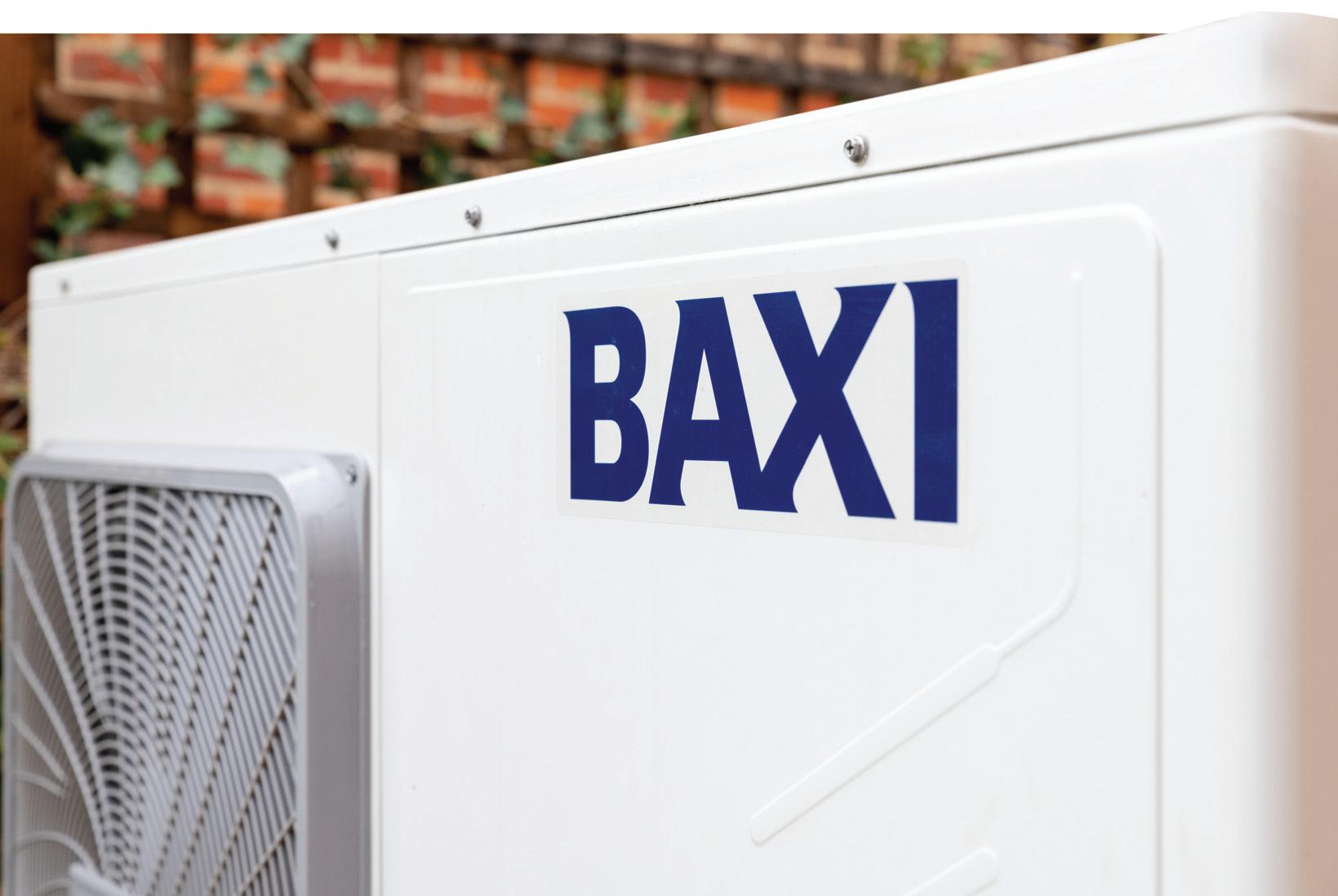
Hydrogen is unlikely to be available to home-owners for several years, but the Government is deciding on whether only hydrogen-ready boilers should be installed after 2026. That would give a strong signal that hydrogen will play a part in home heating in the future, but it would still be unclear when different parts of the grid could be converted from natural gas to hydrogen.
Hydrogen boilers will be installed much like traditional gas boilers, and so the training being developed for them will be integrated with existing qualifications. By easing the transition to hydrogen by mandating hydrogen ready appliances, installers may be able to get hands-on with the new tech in a few year’s time.
To find out more please www.rdr.link/pat014
2




The removal of dirt and air from a system is important to ensure that the system remains efficient. Through the installation of dirt and air filters the lifespan of a system can be increased, but ongoing maintenance must happen for this to possible. The new Caleffi XF dirt and air filter comes with a self-cleaning function, which minimises downtime has been designed to make maintenance easy to ensure the system is kept running. 3

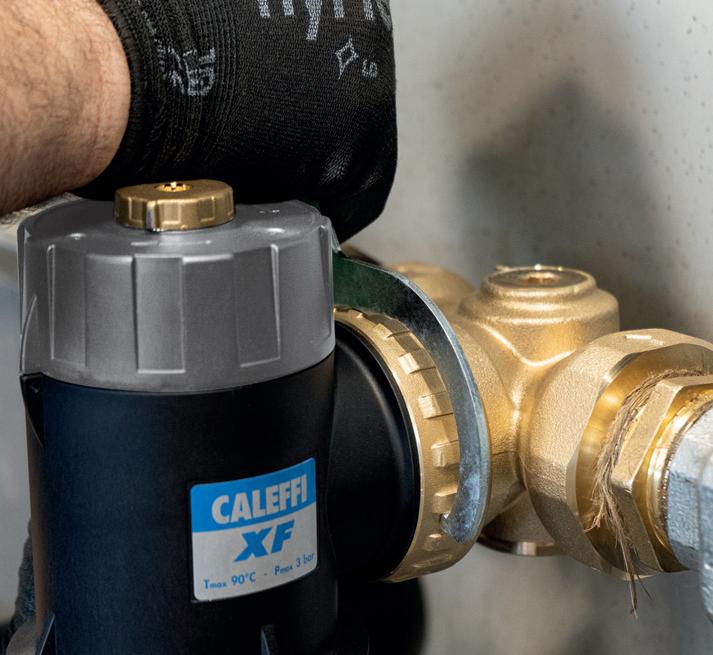
1 I Choose the location of where to fit the Caleffi XF filter.
2 I Install appropriate adaptors to suit pipework connections and ensure the correct tightness for the prevention of leaks.
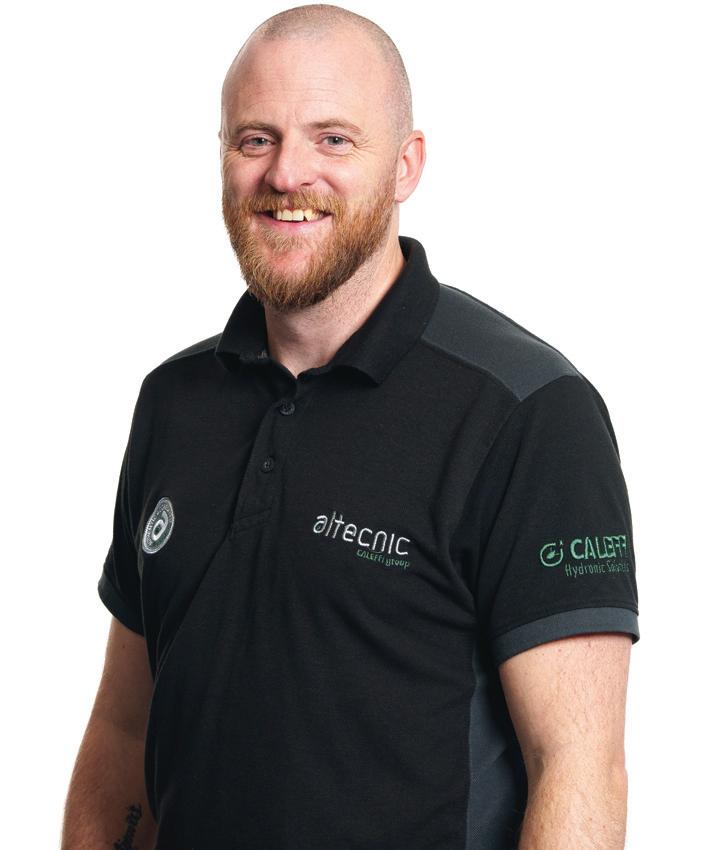
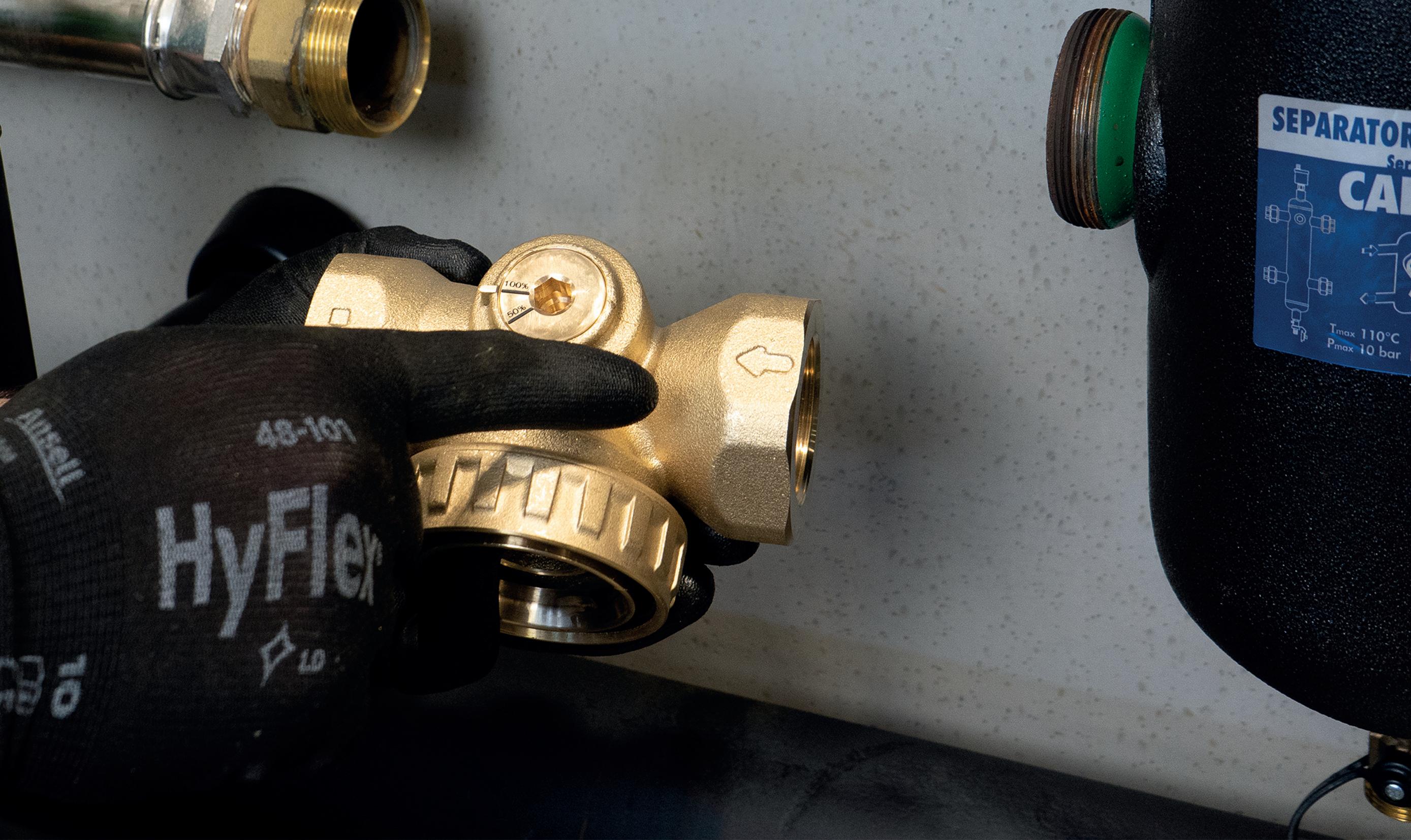
3 I Once pipe connections are made, install the body of the filter in the correct orientation and flow direction.
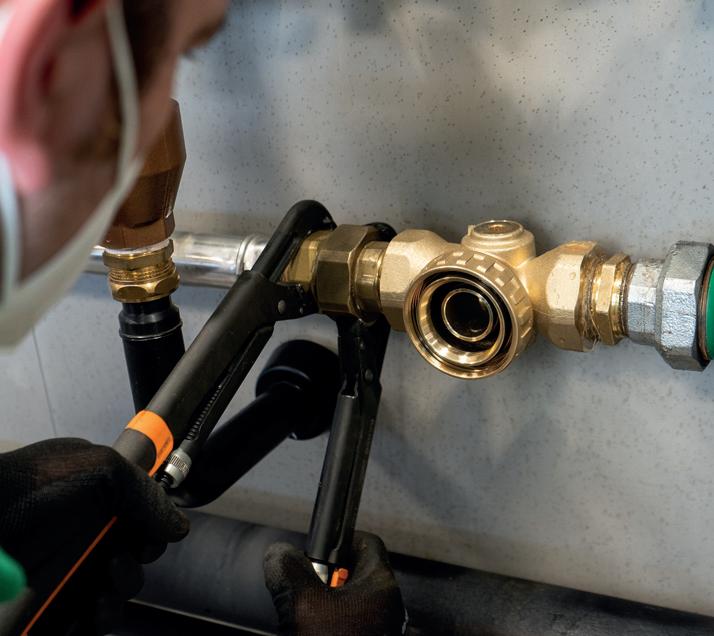
4 I Connect the main filtration piece to the body piece to the body and tighten using the unique spanner (which comes with the Caleffi XF).
5 I Once water is introduced into the system, use the integral air vent to rid the system of air.

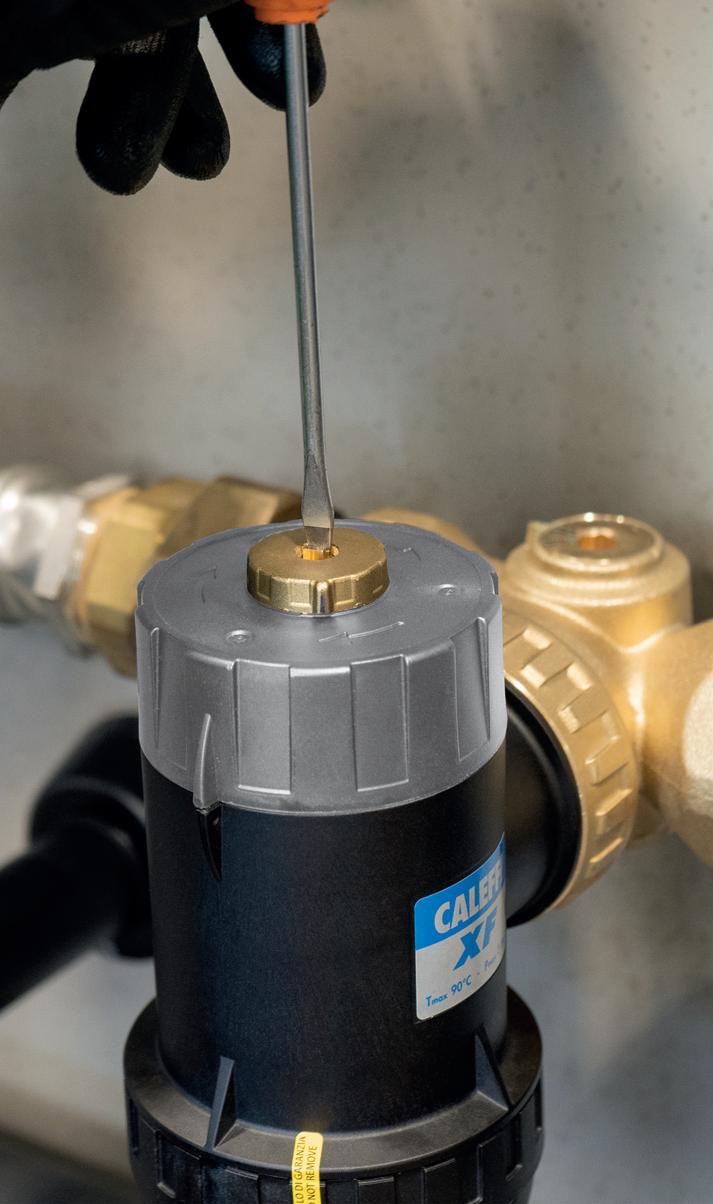
6 I Insert dry pocket magnet to help capture impurities.

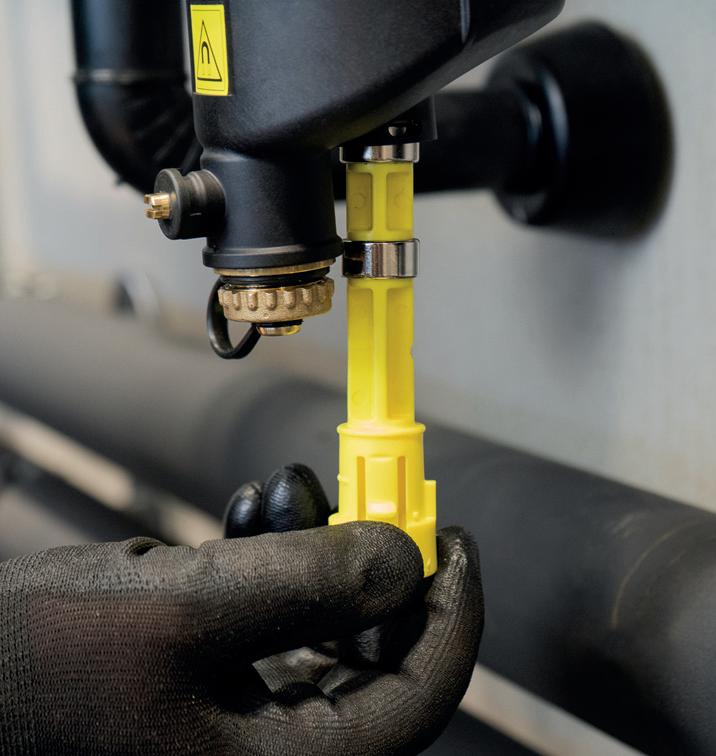
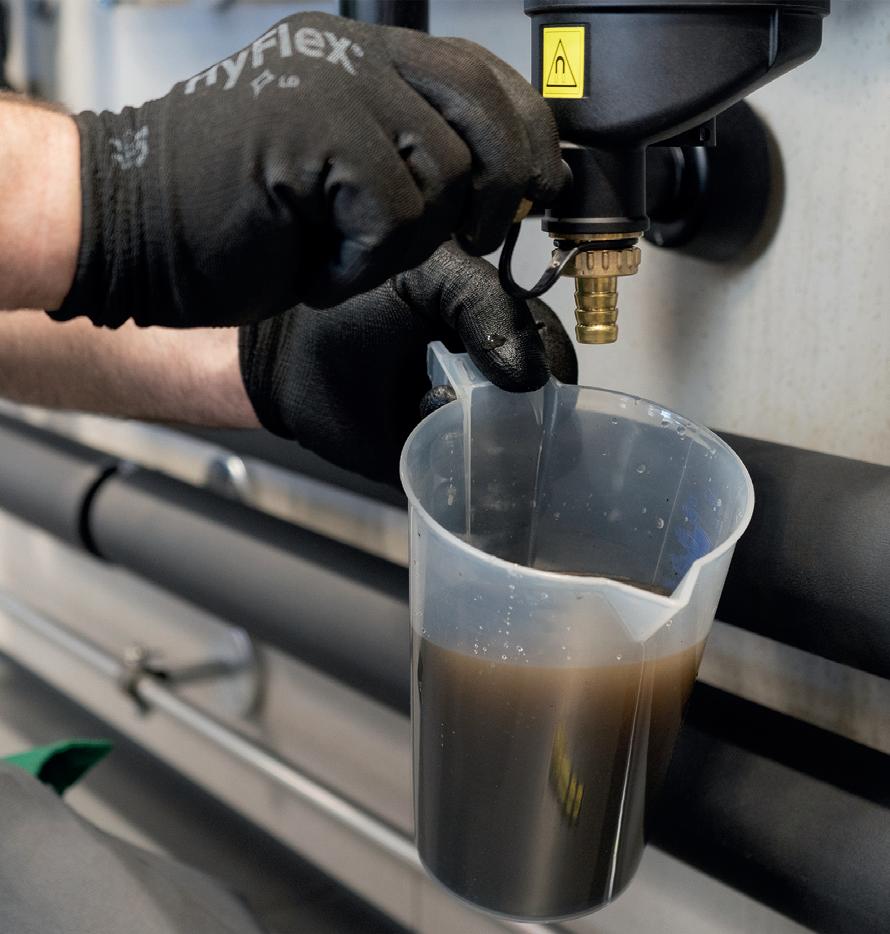
7 I Rotate the top of the brushes to move brushes 360 degrees and clean the filter.
8 I Once you have completed the 360-degree rotation, remove the magnet.
9 I Open drain valve to remove system impurities.

For more information please www.rdr.link/pat015

Low carbon heating has been installed at a 100 year-old cottage, including a remote control and diagnostic platform.






Anewly renovated house in Lincolnshire has been installed with central heating for the first time including the installation of Warmflow’s new Zeno Air Source Heat Pump.
The Landlord of the 100 year-old farm cottage set out to get a state-of-the-art heating system that could be adapted into the building. The Landlord wanted a clean heating source that would efficiently and effectively heat this home as well as being environmentally sustainable.
Installers Len Breathwick & Son recommended the Warmflow Zeno Air Source Heat Pump. “The Warmflow Zeno Air Source Heat Pump was a no brainer for this property. With the help of Warmflow’s heat pump design team, we chose to go with the AS01 paired with a Warmflow Nero 170ltr heat pump cylinder. The air source unit was easy to install and commission.”
The Zeno AS01, which outputs 8kW of heat energy, provides hot water temperatures of up to 50˚. This unit also supplies the underfloor heating and the low temperature radiators with hot water for heating. It is paired with the company’s new 170ltr Nero Heat Pump Cylinder which provides hot water. This was the installers first time installing a Warmflow Zeno Air Source Heat Pump.
GB Renewables Sales Manager Niel Rumbold said: “The Zeno Air Source Heat Pump units are a brilliant heating solution for all types of homes. They offer excellent energy savings and can help reduce the end user’s carbon footprint.”
He added: “In this case, the homeowner wanted a sustainable heating solution for the cottage and has expressed their delight at the results. Underfloor heating had already been installed in the property



as well as radiators, making the ultimate heating solution when paired with our heat pump. This is because the underfloor heating and low-temp rads requires lower flow temperatures of 35 degrees, meaning the heat pump in turn uses less electricity.”
Warmflow’s range of air source heat pumps harness natural heat energy from the air and offer features such as Warmlink. Warmlink is the company’s remote control and diagnostic platform which comes as standard with all Zeno heat pump models.

The installing engineer simply downloads the Warmlink app onto their phone, scans the unique QR code on the side of each appliance and is then able to remotely monitor, fault find and control the unit from anywhere in the world.

The Landlord commented: “I like the look of the unit. And I feel safe knowing the installer can monitor and look after my heat pump through the Warmlink app.”
For more details please www.rdr.link/pat016

Warmflow is offering free training at all its training schools across the UK & Ireland. Engineers looking to start installing air source heat pumps or simply brush up on oil installation and fault finding can update their knowledge at one of seven training centres. Engineers can learn more about Warmflow’s Zeno air source heat pump with Warmlink remote control technology or the company’s Agentis oil boiler range.
The company has partnered with a number of centres offering OFTEC & BPEC heat pump courses in addition to less in-depth product familiarisation courses.
The Zeno range includes several market leading components including a Panasonic EVI compressor and a Grundfos circulating pump. The range comes a number of features designed to reduce installation time including a touch screen controller and simple wiring centre.
For more details please www.rdr.link/pat017
With the help of Warmflow’s heat pump design team, we chose to go with the AS01 paired with a Warmflow Nero 170ltr heat pump cylinder.
Do you want to know something crazy? At least 80% of the business owners I talk to don’t have a business plan of any kind. Now consider whether you would ever tender for or begin an install on a big job without a set of plans or drawings. Just seeing what happens as you go along would almost certainly result in a disaster.

And yet I see so many times a business is being built without a plan, or a basic plan gets written and is then shoved in a drawer and not looked at again. Our most successful clients follow their plan so that they are working ON their business and not just IN the business.
I've spent years helping contracting businesses (both in the M&E and Fire & Security sectors) by using the ‘Bright 7-Sector Orbit’ model to improve structures and systems in their company that will help them manage, control and grow more effectively. Let’s be honest, more revenue isn’t always the answer – it can cause major headaches in terms of resourcing and systems – but every business wants to be more profitable and organised so they can deliver to higher standards.


A business plan should be a living, breathing document and, using the 'Bright 7-Sector Orbit' model, you can put an effective, well-rounded plan in place across each of the key business sectors we use. Over the coming months, I'll drill down into each of the individual elements that can improve your business, but first it is important to understand what each represents. To make it easier to understand, we use the human body as a system, with each piece working together to create an effective machine:
Leadership: is like the head (or specifically the right side of the brain), focusing on developing knowledge, engaging people, and understanding their emotions. Creating your vision and strategy is where winning mindsets and attitudes are formed.
Management: the left side of the brain is concerned with logic, writing plans, regularly reviewing, monitoring, and improving your business structure. This is the ‘who does what and by when’.
Finance: is the torso of the body, focused on turning food into energy. Our finance
operation converts work into cash. Cashflow is the energy and lifeblood of your business and without it, the business dies. You must control your numbers.
Operations: is the right leg. It helps to power the business forwards by following systems and completing works to high standards. Mo Farah didn’t win a gold medal by luck. He had a coach, a team, and a system in place for success.
HR: is the left leg. It’s about developing higher performance teams with a positive culture. Creating job descriptions, appraisals, performance management processes and recruitment systems.
Marketing: is the left arm of the business, creating an opportunities pipeline with new leads or with existing customers. It’s 6-7 times cheaper to work with existing customers than it is to attract new ones. By building solid relationships with existing customers, they will buy more.
Sales: is the right arm. By developing your sales processes effectively, you will generate sales much more consistently. When you combine focused marketing with a sales funnel to motivated and interested people, you’ll have a higher conversion rate.
phpionline.co.uk f e a t u r e s t h e l a t e s t i n d u s t r y n e w s , v i d e o r e v i e w s , t e c h n i c a l

u p d a t e s a n d e xc l u s i v e c o m p e t i t i o n s , g i v i n g y o u i n s t a n t a c c e s s t o a l l t h i n g s h e a t i n g a n d p l u m b i n g o n y o u r d e s k t o p, l a p t o p, t a b l e t o r p h o n e
ww w. p h p i o n l i n e.c o. u k
P r o f e s s i o n a l p l u m b e r @ P H P I


Carhartt, a workwear brand founded in 1889 in Detroit, Michigan, is focusing on helping and protecting hard working tradespeople in the UK. PHPI talked to Nick Poulson, UK Sales Manager, to find out more.

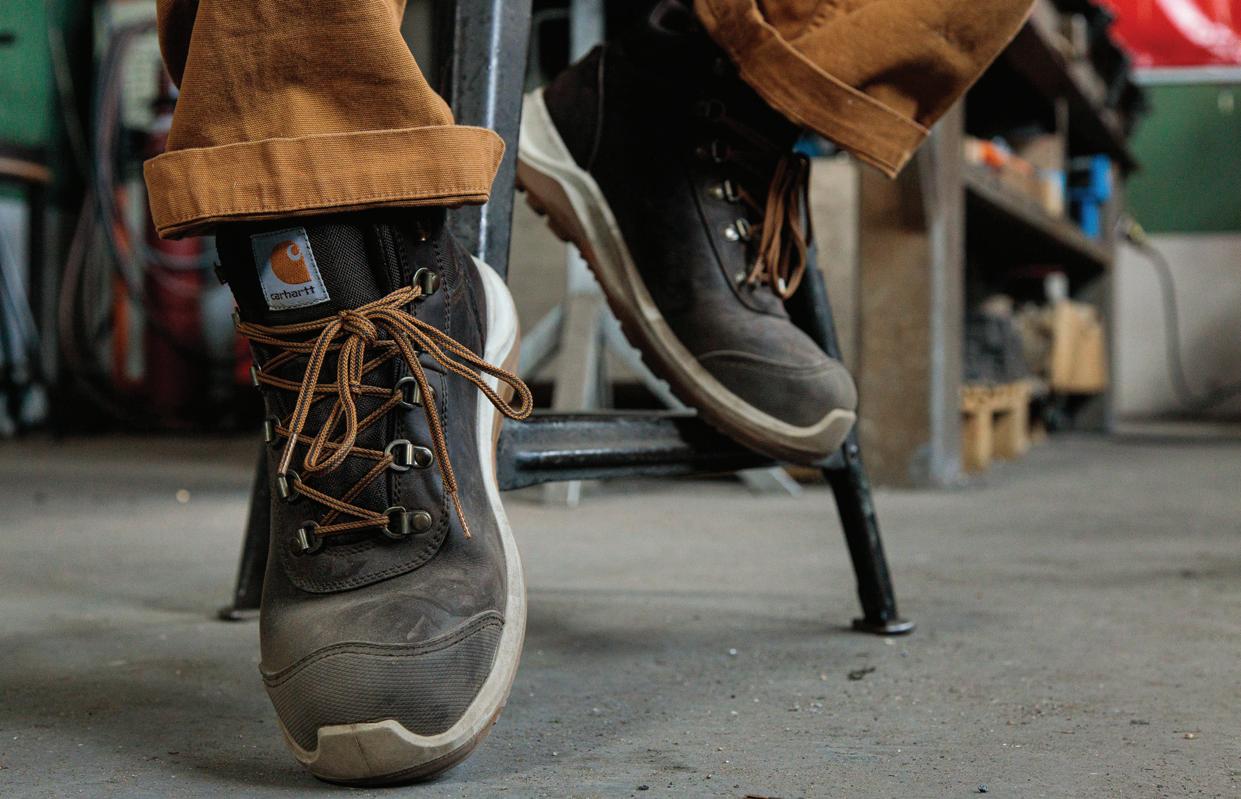
QCarhartt hasalong history stretching over 130 years –tell us more.

Yes, the company was established in 1889 in Detroit, USA, when Hamilton Carhartt & Company was founded by its namesake, known affectionately as “Ham”, and began producing overalls with two sewing machines and a half-horsepower electric motor in a small Detroit loft. Under the motto, “Honest value for an honest dollar,” the iconic Carhartt bib overall was created and rapidly evolved into the standard for quality workwear.
For over 130 years, we have been known for our rugged construction, innovative designs, exceptional quality standards, durability and comfort and has become legendary among skilled tradespeople. The company really set a new standard of performance and continues to meet the evolving needs of hardworking people by weather-proofing its product line to provide the 24/7, year-round solutions they need in the rugged outdoors – especially on the construction site.


QWhy have you decided to focus on UK tradespeople now?

in the United Kingdom includes the opening of our office in Newark, Nottinghamshire, a UK field sales team growing our number of stockists and really pushing the fact that with our workwear you can protect yourself and still look great on site and when it’s time to go home and relax too.
QWhat types of workwear does the company make today?
Essentially, whatever construction work
you’re doing, we’ve got your back. The workwear ranges from tough and comfortable work trousers, rugged and durable work jackets as well as fast drying and work T-shirts to certified safety shoes and work boots. We also design workwear specifically for women. These designs fit and protect the body better and are therefore much safer. The rugged women’s workwear collection is designed to ensure that the modern woman is prepared for any job, whatever the weather.
The company name is famous in the fashion world too, isn’t it?
Yes, we have a sister fashion brand (known as Carhartt W.I.P.), but the legacy workwear brand is the one which PHPI readers will be most interested in and will use on site. The trade can rely on our workwear to protect them, while looking great out on site. Our workwear is designed specifically for the tough construction site, and strong enough to get you through any working day, no matter how tough it is. Our founder, Hamilton Carhartt firmly believed that, “when I make a sale, I make a permanent friend,” and the workwear is built to last with that ethos in mind to this very day.
QWhat kind of ‘look’ do you think Carhartt’s clothing has?

We have kept an ‘authentic’ look to our clothing. Throughout our history, it has been our customers who have helped us identify several pieces of hard-working gear as ‘icons’. These are the products that have truly stood the test of time and whether adding pockets, colours, or incorporating our innovative technologies to combat rain, sweat and provide flexibility, at the heart of each product is the durability and reliability customers have come to know and love.


QDoes it perform well out on site?

Yes it does. Some tradespeople have kept their jackets and trousers for years. Central to the workwear’s performance are our fabric technologies, which have been designed to provide the ultimate protection, whatever the weather conditions are on the construction site.
The Rain Defender coating in our gear, for example, is a water-repellent technology, which means our jackets are built to stand up to light rain, on the job and after. For really wet conditions, look for the Storm Defender waterproof breathable outerwear, which stops every raindrop but allows body heat to escape. Then we have our Super Dux collection which features ultra-tough gear that fights off wind and rain and flexes with your every move. Plus, it's lighter but still more abrasion-resistant than our original duck fabric. Quick Duck was introduced to better serve the modern worker through a lightweight fabric that is ounce for ounce as durable as our traditional sandstone duck jacket.
Force technology is engineered to beat the heat, fight sweat and dry fast, so you stay cool and comfortable 24/7. Hardworking men and women also told us they wanted gear with more stretch and recovery – and we listened –so Carhartt Full Swing is fully-engineered to improve the way you move – while keeping that classic look.
For more information on the Carhartt range please www.rdr.link/pat019

The workwear ranges from tough and comfortable work trousers, rugged and durable work jackets as well as fast drying and work T-shirts to certified safety shoes and work boots.
As a heating engineer, it is likely that each day you’ll take on a variety of tasks ranging in difficulty. That is why it is essential to have the right tools for every job. The team at Testo understand why having the right instruments is vital to ensure correct measurement and prevent unhappy customers due to excessive waiting times. We also know how important it is to have efficient tools on which you can rely. As experts in measurement instruments for HVAC applications, this is an area we are highly knowledgeable in, so here is our opinion on the top five measuring instruments for all heating engineers...
Flue gas and emission measurement on heating systems and other small combustion plants serves to determine the level of pollutants emitted and the heating energy lost. The electronic flue gas analyser is a staple for heating engineers across the globe. They help in achieving safe and optimal boiler performance by measuring the key gas components within the combustion process. There are a range of flue gas analysers on the market for applications from domestic to industrial boilers, and all deliver precise results and allow you to see any issues instantly.
Testo shares its take on the top five HVAC measurement instruments for heating engineers.
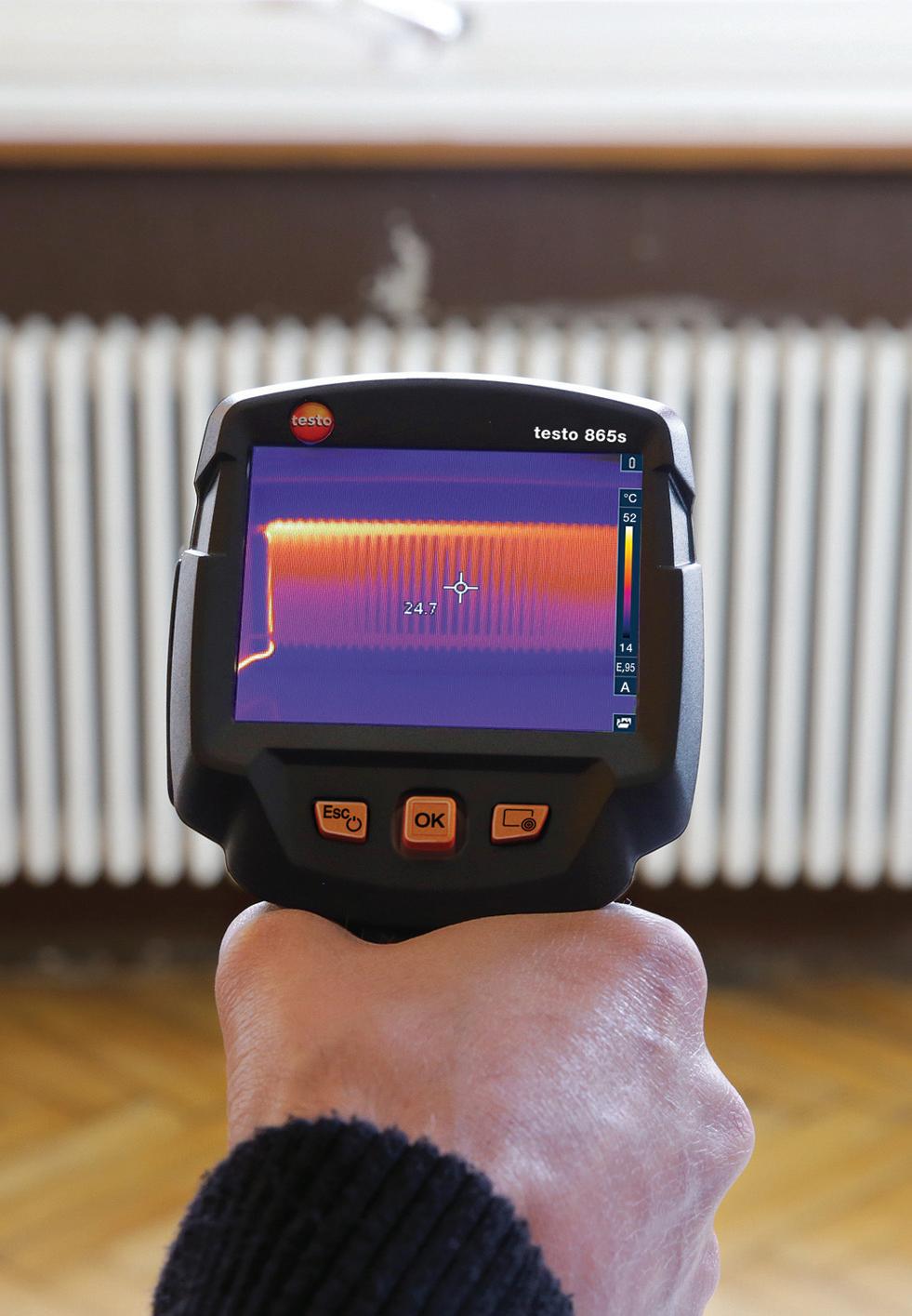

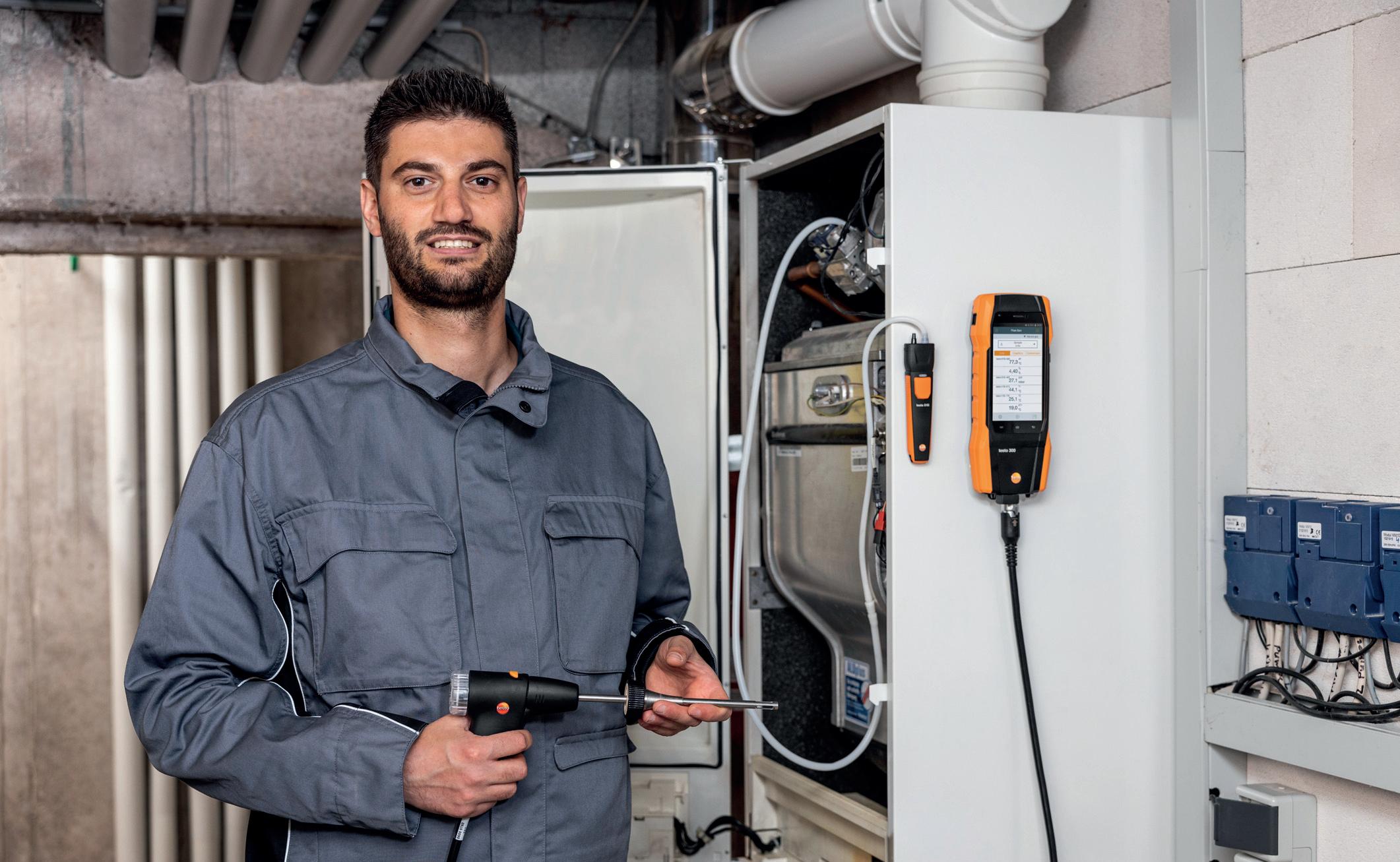

often not easy. It is better not to let it come to that – with professional leakage quantity measuring instruments and fast sniffers. It only takes a small amount of gas to cause a potential safety risk, especially in a confined space, so finding any leak is imperative. With an electronic gas leak detector, leaks can be located in an instant and corrective action taken, and the Testo range can be used on all common combustion gases.

2
Tightness testing (better known as serviceability or leakage quantity testing) on pipe systems must be repeated every 12 years with a measuring instrument. When undefinable problems on heating systems occur, the cause is often a gas leak. Searching for and finding gas leaks is
A thermal imaging camera is the perfect tool for detecting and pinpointing thermal anomalies without causing undue destruction to customer property – there are hardly any measuring instruments as versatile! They allow visualisation of pipework and leaks in hot water and underfloor heating systems, radiator blockages, and many other potential problem areas to be quickly identified.
A thermal imaging camera also helps to detect thermal bridges and structural defects and allows you to see wear before system failure. With a range of products available on the market, thermal cameras are ideal for a wide range of applications in heating system diagnosis for both domestic and industrial settings.
Want a professional, pocket-sized instrument to assist you in your daily tasks? Look no further – Smart probes are ideal measurement tools for everything in the world of HVAC. The compact professional measuring instruments are ideal for all your refrigeration, air conditioning, heating and ventilation applications.
Each of the compact measuring instruments fulfils a very specific measuring task when it comes to monitoring temperature, pressure, humidity and flow. They allow the user to measure a broad range of values, including temperature, pressure, humidity, airflow, etc... through the use of a corresponding app with your smartphone or tablet device. Smart Probes are all about simple, wireless measurement and swift on-site reporting of measurements.

Digital Manifolds are the perfect tool for work with heat pumps. With move towards Net Zero and greener heating technology, heat pumps are set to change the market of home heating systems. Testo digital manifolds are already widely proven within the refrigeration and Air-conditioning service sector and within the established heat pump market in Europe.

For information on Testo’s range of flue gas analysers please www.rdr.link/pat020
For information on the range of gas leak detectors from Testo please www.rdr.link/pat021
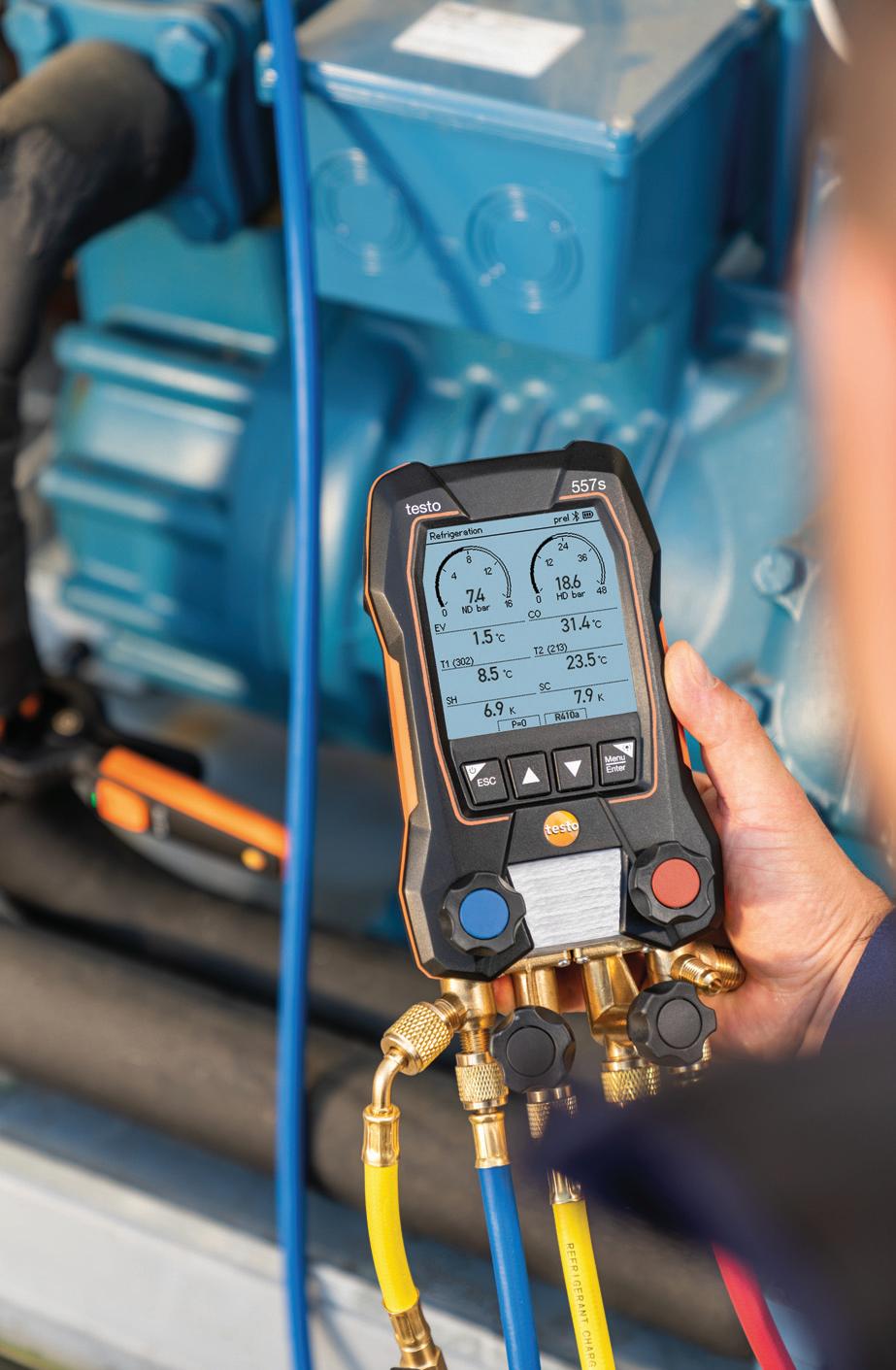
For information on the range of thermal imaging cameras from Testo please www.rdr.link/pat022
For information on the range of smart probes by Testo please www.rdr.link/pat023
For more information on Testo’s range of digital manifolds for heat pumps and refrigeration please www.rdr.link/pat024
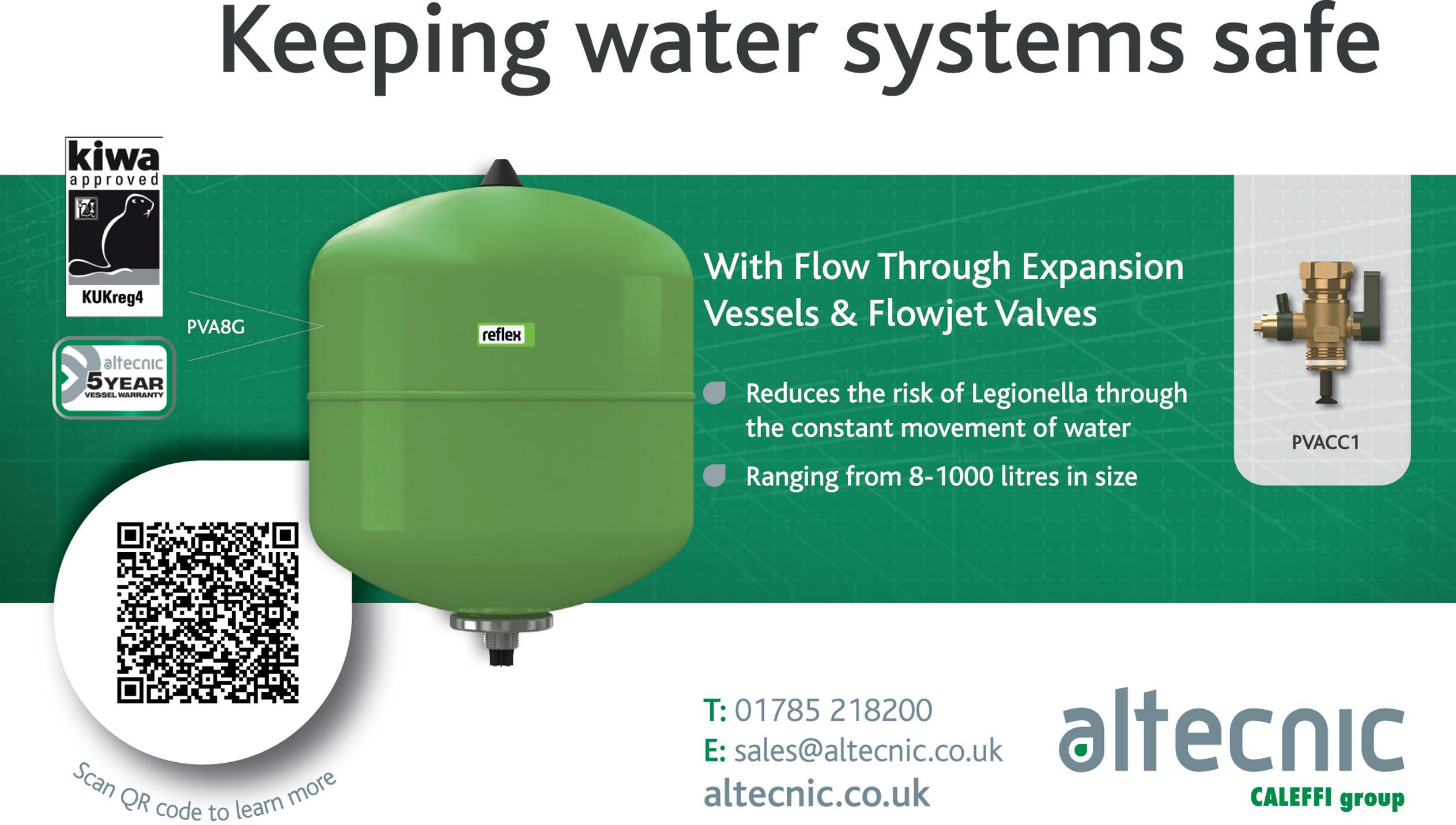
Knee injuries are common in the workplace. Sore and swollen knee joints are something that most tradesmen and women suffer from at one time or another and bumps to the knee can be innocuous but troublesome. They’re a perennial problem and can be highly aggravating, but prevention is far easier than cure by taking the proper steps to look after your knees.
The knee is one of the largest and most complex joints in the body and there are different types of injuries that are of particular concern to anyone who works on their knees for any length of time.
The most common ailment is Housemaid's Knee or Bursitis, which is caused by kneeling for long periods of time and by repetitive knee movements such as crouching down and standing up. Fluid builds up in the Bursa – which is the sack of fluid that cushions the knee joints – causing swelling, soreness and stiffness in the joint.


What’s the answer?
The most effective knee protection in the workplace is, as you might expect, covered by legislation and PPE certification standards. The EN 14404 Knee Protection Standard deals with the size, force-distribution and penetration-resistance of kneepads.
Type 2, Level 1 protection ensures reliable knee protection for workers in a mobile working environment that involves regular kneeling to perform their job. This protection level is designed to protect the knees in all types of working environments where you find rough, hard and damp surfaces as well as ground debris up to 1cm thick. The Type 2, Level 0 standard designates effective knee protection for those people who need to work on their knees indoors – but only occasionally.
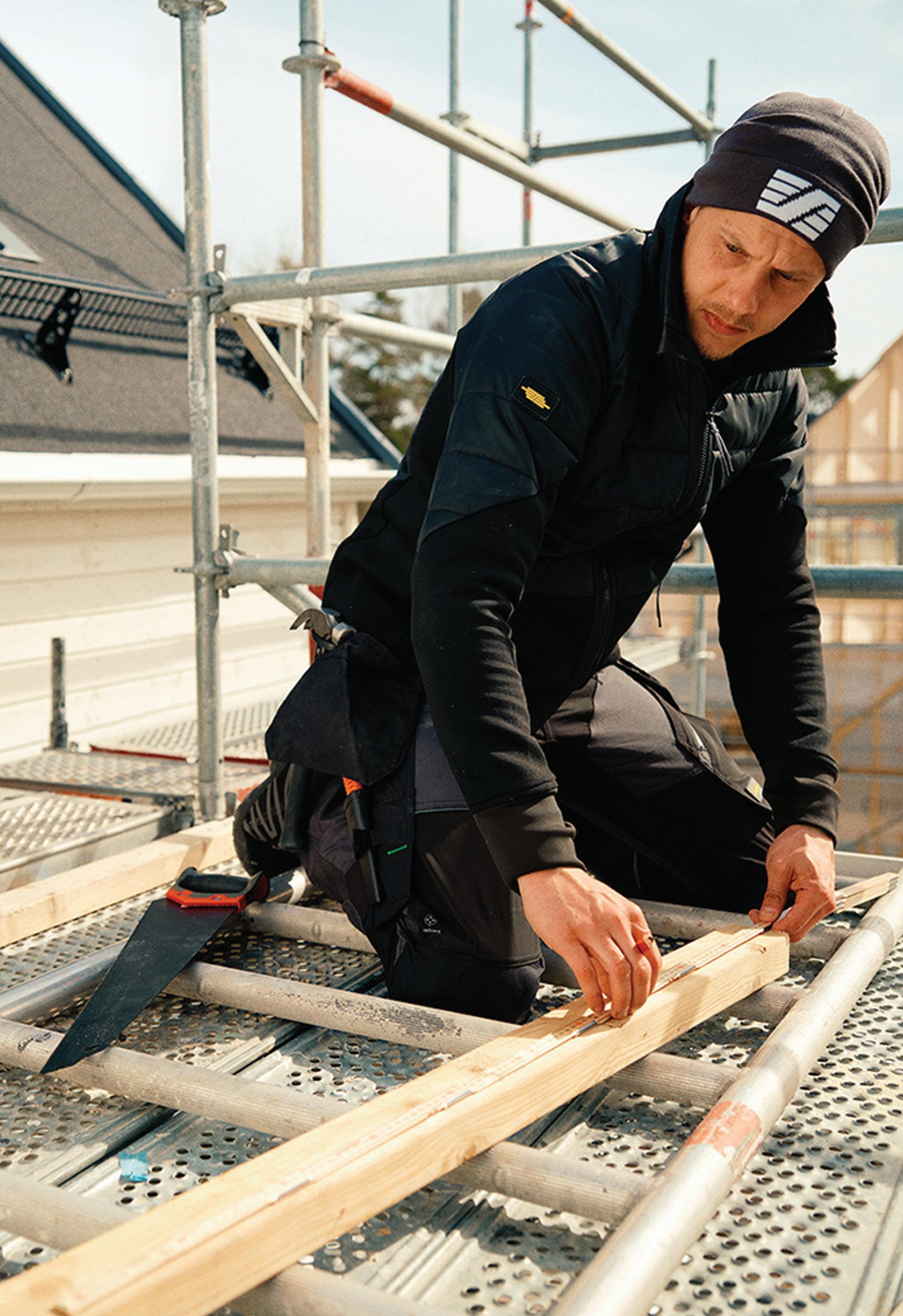 Peter Dumigan, Managing Director of the Hultafors Group UK, which owns Snickers Workwear, Hultafors Tools, Solid Gear and Toe Guard safety footwear, looks into how trades professionals can protect their knees while working on site.
Peter Dumigan, Managing Director of the Hultafors Group UK, which owns Snickers Workwear, Hultafors Tools, Solid Gear and Toe Guard safety footwear, looks into how trades professionals can protect their knees while working on site.
There have been various types of knee protectors available over the years such as inflexible strap-on pads that cut into the back of your knees, causing bruising and potentially impeding blood circulation.
Effective protection really only comes from combining properly designed Work Trousers that use market-leading fabric technology with a knee protection system that has been thoroughly tested, manufactured and certified using materials that perform to the highest standard day in, day out.
The most effective kneepads are those that work efficiently and in tandem with the design of the Work Trousers they’re used with – staying in precisely the right position all the time to ensure reliable and comfortable knee protection.
Properly designed and certified Trousers and Kneepads will have a pocket design that has special seams which allow the wearer to adjust the kneepads for individualised comfort and protection. Such a design makes the kneepads ‘flex’
when you walk, which also ensures they automatically mould around your knees when you kneel down.
Most workwear manufacturers supply kneepads for their Work Trousers and they vary in price, quality and effectiveness. It will come as no surprise to most that some have no guarantee of comfort or protection.
However, the more discerning professional tradesmen and women – those particularly concerned with their health and welfare on site – will invest in ‘active’ kneepads that are proven to last and protect. The top-performing ‘active’ kneepads take cutting-edge knee protection to a completely new level with materials like the D3O compound.




D3O is an impact protection material with a variety of sports and outdoor activity applications. It’s an active and specially engineered rubbery material comprising intelligent molecules which ‘flow’ with you as you move. On shock they lock together to absorb the impact energy which provides high-frequency protection.

The durable D3O material also features an extremely slow compression rate, ensuring that the kneepads keep their shape during hard work and for long periods of time. What’s more, given that knees are not flat, the ergonomics of D3O kneepads is important in providing continuous comfort around the profile of your knee.
So, when you’re buying Work Trousers and especially Kneepads, look for the ones that are tested and certified for performance, efficiency and protection to deliver market-leading comfort and wellbeing day in day out.
For more information please www.rdr.link/pat025

The most effective kneepads are those that work efficiently and in tandem with the design of the Work Trousers they’re used with
Safe electrical connections are vital. Knipex has recently introduced some new crimping tools to help installers keep connections in line with standards.
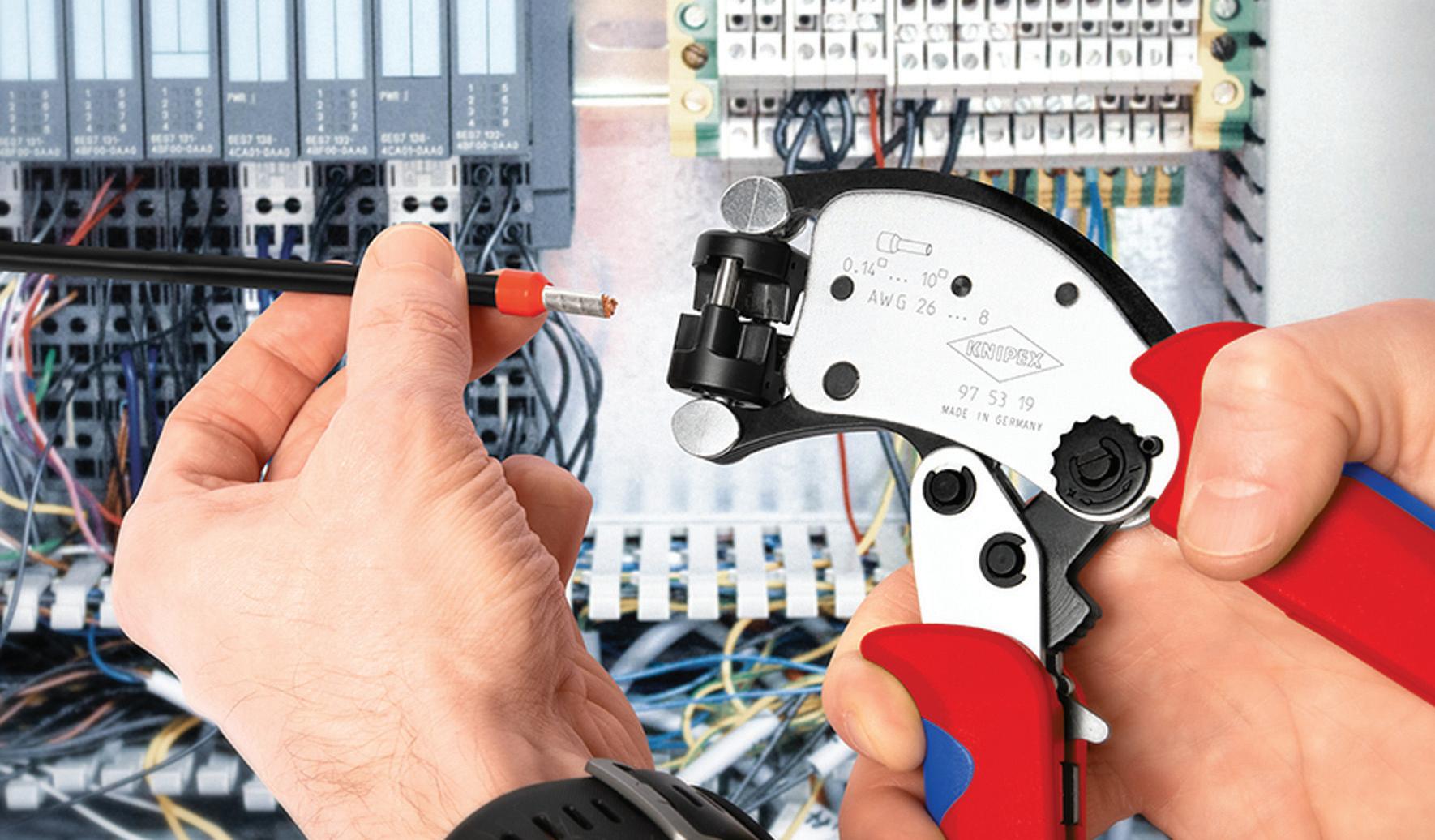

Perhaps better known for its cutting pliers, Knipex also has a range of crimping tools, including some new additions to the range, designed to produce fast, safe and secure connections in compliance with standards.
From inexpensive crimping pliers for wire ferrules as a light and compact hand tool, to the compact and universal Multi-Crimp crimp system pliers and the semi-automatic, electrically driven eCrimp system pliers with over 1,500 interchangeable, different crimp inserts, the company’s solutions provide a number of options.

Connect more Crimping pliers for wire ferrules exert pressure on both ferrule and wire from all sides via four crimping parts. In this way, when choosing the right crimping profile or using an automatic crimping tool due to plastic deformation, a mechanically firm and electrically secure connection is achieved.
For instance, the company’s Self-Adjusting Crimping Pliers for wire ferrules is designed to provide reliable hexagonal crimping of wire ferrules from 0.08 to 16 mm² (AWG 6) by simply turning and setting the adjusting wheel, and all twin wire ferrules up to 2 x 10 mm² (AWG 2 x 8). The tool has an automatic self-adjustment feature designed to ensure a complete crimping cycle for consistent, reliable and fast crimping.
The hexagonal crimp layout is particularly suitable for confined connections as it gives near round form. The tool also has an automatic adaptation feature that adjusts to the wire ferrule size for precise and quick crimping. The crimping pressure is calibrated in the factory and the tool includes a toggle lever to ensure optimum transmission of force for fatigue-reduced operation. The tool is also compliant with DIN 46228 parts 1+4 for crimping wire ferrules. It Is made of special quality chrome vanadium electric steel that is oil-hardened for added durability.

Also new for 2023, the Knipex Twistor T has a crimp head that can be rotated 360° and has eight locking positions. The trapezial crimp profile has a high capacity range from 0.14 to 10mm², allowing wire ferrules to be crimped from almost any working position. The tool also has an automatic adjustment feature that adapts to different cross-sections, making it easy to use for a variety of projects.
The crimp opening is accessible from both sides and can accommodate wire ferrules up to 18mm in length in one operation. The tool is also suitable for crimping twin wire ferrules up to 2 x 6mm². The ratchet mechanism (which is unlockable) has been designed to enable repetitive, high-quality crimping.
Knipex also has a range of assortment boxes, such as the 97 99 906 Assortment Box, which is a solution for storing and dispensing these essential components. These boxes feature a handy, transparent dispenser box with a rotating lid that allows for easy access to the individual wire ferrules inside. The lid has an opening designed to makes it simple to remove a single wire ferrule, without having to take the entire box apart.
For more details please www.rdr.link/pat026
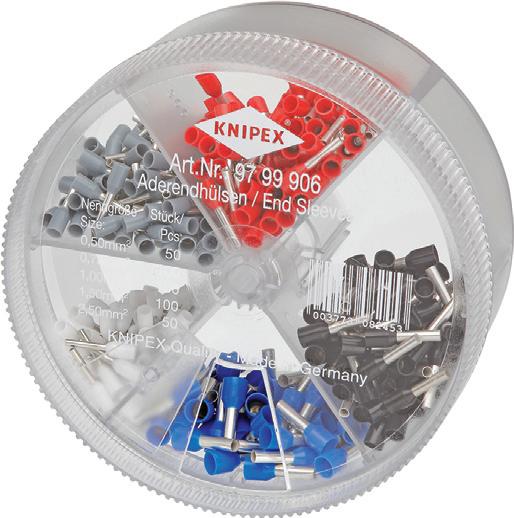
The tool also has an automatic adjustment feature that adapts to different cross-sections, making it easy to use for a variety of projects.
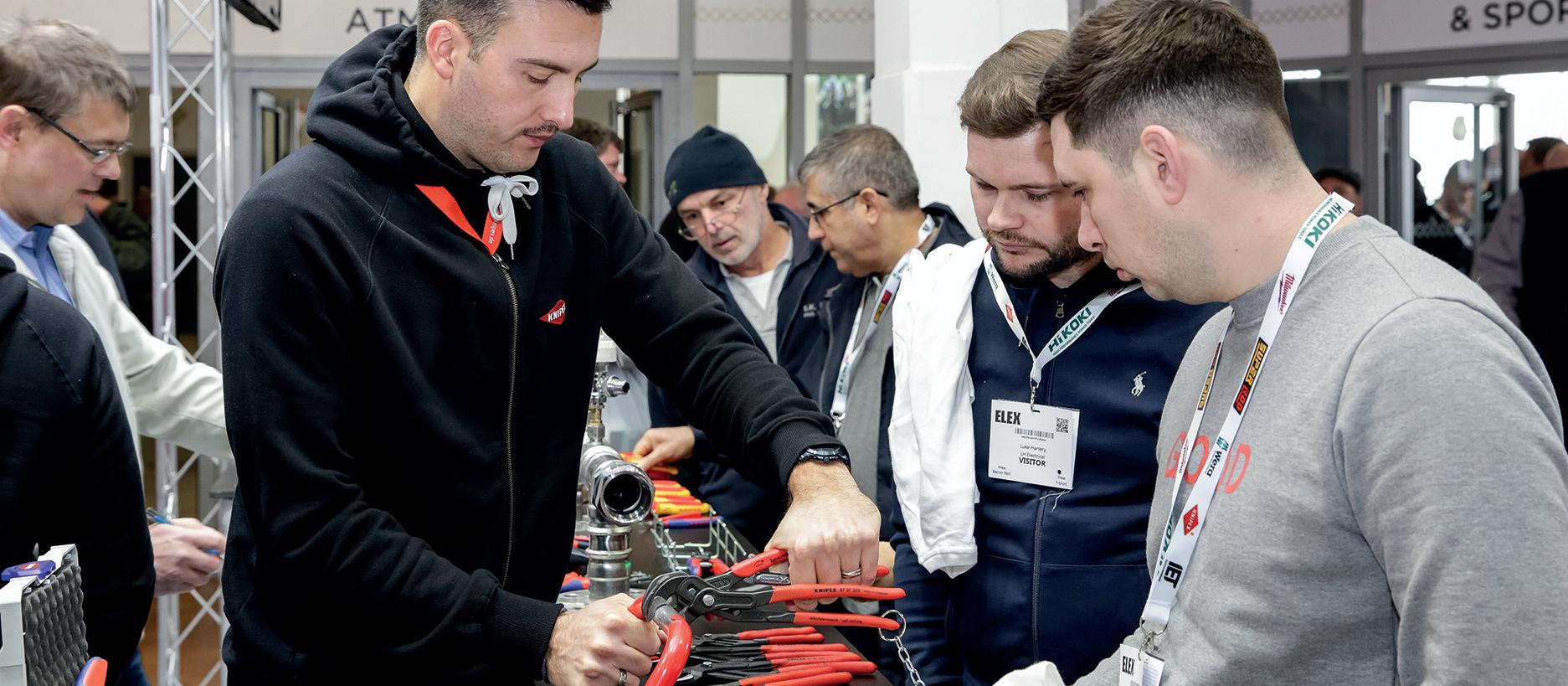
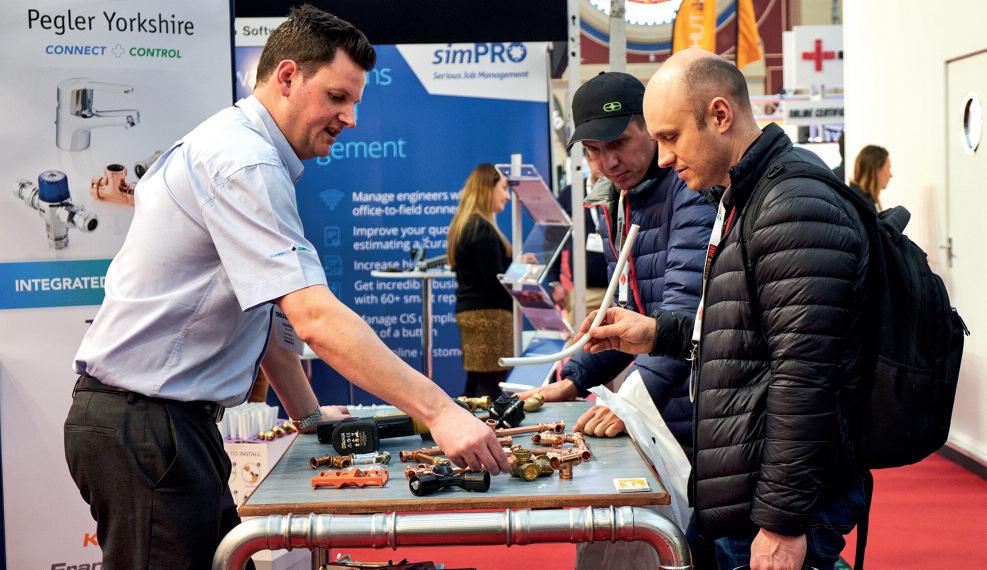


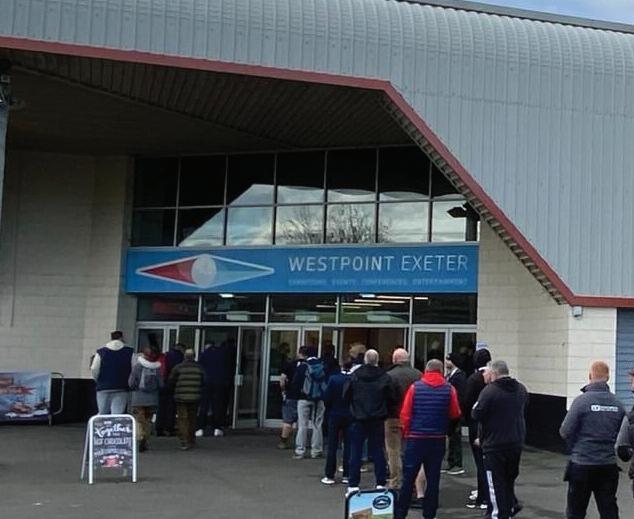


Impact drivers and combis are an integral part of many professional trades’ toolboxes and often available in tandem. The new DLX2460TJ Combo Kit features two of Makita’s popular professional cordless power tools – the DTD153Z 18V LXT Brushless Impact Driver and DHP487Z 18V LXT Brushless Combi Drill.
Housed in a Type 3 Makpac Connector Case for easy storage and transportation, the kit also includes two 5.0Ah 18V LXT BL1850B Batteries and the DC18RC Fast Charger which can be used across the company’s LXT range – particularly useful if you already have a number of these tools in your collection.
The DTD153Z is a powerful impact driver with 170Nm max torque, delivering a no-load speed of 3,400rpm and providing up to 3,600 impacts per minute – which Makita says makes it capable of driving screws up to 125mm into timber without a pilot hole and up to 30% faster than a conventional drill/driver.
The compact DHP487Z 18V LXT Brushless Combi Drill features variable speed control to deliver up to 1,700rpm,
25,500bpm and 40Nm maximum fastening torque for a wide range of drilling, fastening and hammer drilling applications.



Weighing up to 1.7kg, it is a portable combi drill which the company says can handle a wide scope of applications. It also has a single sleeve keyless chuck with 20 torque settings designed to make bit changes quick and easy, plus there is a drill mode for added fastening control.


Kevin Brannigan, Marketing Manager at Makita said: “Our Combo Kits are incredibly popular with many different product configuration options available to suit individual requirements, applications and budget. What’s more, these kits offer significant savings when compared to buying the components individually, making these a much more economical purchase for end users.
“We have added the new DLX2460TJ 2-Piece Combo Kit to our line-up to offer even more choice, with a premium range of power tools that can tackle a wide variety of jobs on site. Plus, the kit includes two batteries and a fast charger which can be
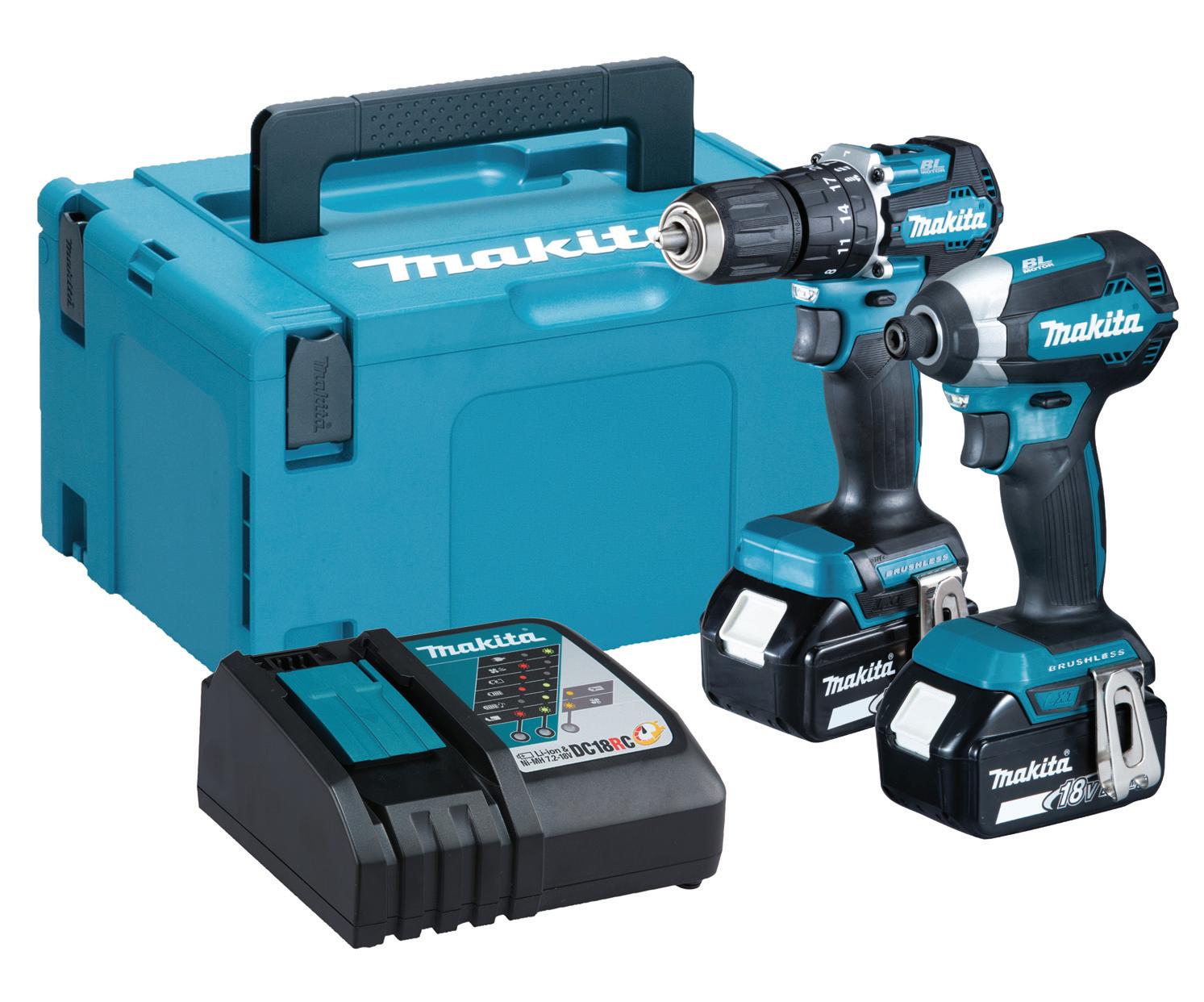
Our Combo Kits are incredibly popular with many different product configuration options available to suit individual requirements, applications and budget


Every plumbing and heating installer knows that a good van and a trusty toolbox is at the heart of a trade business. Without them, you just can’t get the job done. But tool theft from vans has become an alarming reality for tradespeople in recent years, with one report indicating a 150% increase in just the last two years.
Although most thefts take place after dark, thieves are no longer afraid to strike in broad daylight. According to police data, 41% of vehicle tool thefts happened on the owner’s street. Tradespeople are now 10 times more likely to fall victim to tool theft from their vehicles than from building sites.
In London alone, over 6,468 tools were snatched from vans in 2022, causing untold financial and emotional stress for those affected. Many tradespeople do not have adequate insurance to cover them should such a tool loss occur. With the added pressure of the pandemic and the rising cost of living, it's a tough time for small businesses.





When it comes to tool insurance, many general insurance companies treat it as an afterthought, merely tacking it onto a trade's Public Liability insurance. But this could be a costly mistake. Dedicated tool insurance can mean the difference between getting back on the job quickly or being out of work for weeks. Some
tradespeople have learned this lesson the hard way, finding out too late that their insurance policy didn't cover tools left in their van overnight. Others are caught off guard by the unavoidable fact that, like everything, the value of their tools depreciates over time. But these are not the only challenges.

Tool thefts from vans are a constant concern for professional tradespeople. But, with the help of technology you can deter thieves, protect your tools and safeguard your business, says Duncan Jackson, co-founder of ARMD. 3

But hope is not lost. There are effective measures that tradespeople can take to safeguard their livelihoods from these opportunistic criminals. ARMD has been designed and developed with the trade to address these barriers. It puts you in charge and helps to make protecting your business easier and more accessible. The platform allows you to quickly and simply claim digitally through an easy-to-use App and website if you have recorded them in the tool inventory – which is free to use for
Essentially there are just four steps: the tools you own, how much they are worth and any receipts or proof of purchase. This will make it so much easier to claim if a theft occurs. yourself with van security products, such as the ARMD GUARD. A silent van alarm and tracker. yourself with a dedicated tools policy and that will enable you to replace what you have lost.



● Replace your tools quickly thanks to a quick insurance payout and get back to work.

Technology

According to government data, tool thefts account for one in 10 vehicle break-ins in the UK and 81% of these thefts occur after dark. Security products are incredibly important to protect a van, but, if the van side is peeled away to access the interior, some alarms may not go off. A survey by Volkswagen Commercial Vehicles also highlighted that while 57% of van drivers regularly leave equipment in vans overnight, 31% are not protecting it with extra alarms, secondary locks, or vehicle trackers. But it’s always worth making life harder for thieves.
Tested by the trade, the ARMD GUARD Smart Van Alarm adds an extra layer of protection. You don’t need any technical knowledge to set it up as it’s designed to be ‘plug and play’. The sensor silently watches over your tools and in the event of a break-in the alarm triggers and notifies you and not the thief with a phone call and text so you can take immediate action by calling the police. In the event
your van is stolen, the sensor will locate and track it with the inbuilt GPS. The ARMD GUARD integrates seamlessly with the App, so that all your tool inventory, security, insurance, tool and van location is all in one place from just £8.99 per month (launch price). These all work together to bring a superior layer of protection to your livelihood.

If the worst does happen, ARMD can still get you back to work with fast, self-service digital insurance claims. Recently an ARMD user who was a victim of tool theft was back on the tools within three days of the claim being made. Normally that can take anything up to five weeks or longer.
For more details please
www.rdr.link/pat028
In the event your van is stolen, the sensor will locate and track it with the inbuilt GPS.
Well known for its external van accessories, Rhino Products is now launching its first internal racking product – the MR4.

Afamiliar sight on vans across the country, Rhino’s solutions are well-known to many tradespeople.
The company has now announced its first internal racking product to market –which it showcased for the first time at the CV Show in April. The MR4 modular racking solution represents Rhino’s first internal vehicle product in its history and the company has announced the new launch in line with its 20-year anniversary,
The racking has been designed with the same ethos as Rhino’s existing external accessories – to help van users work more efficiently every day. Applying these same principles, the new MR4 racking features
leg panels and shelves made from rigid and robust powder-coated steel, alongside sleek and modern aluminium drawers. Each MR4 configuration has been tailored to maximise vehicle storage space, with Rhino providing bespoke fitting kits for all units.
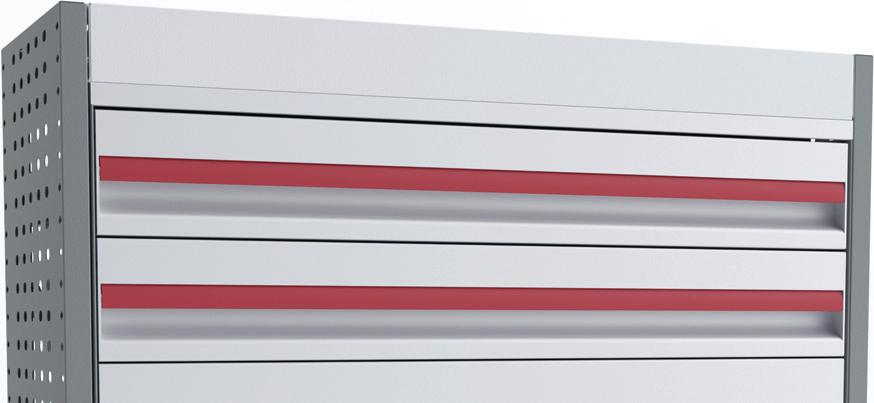
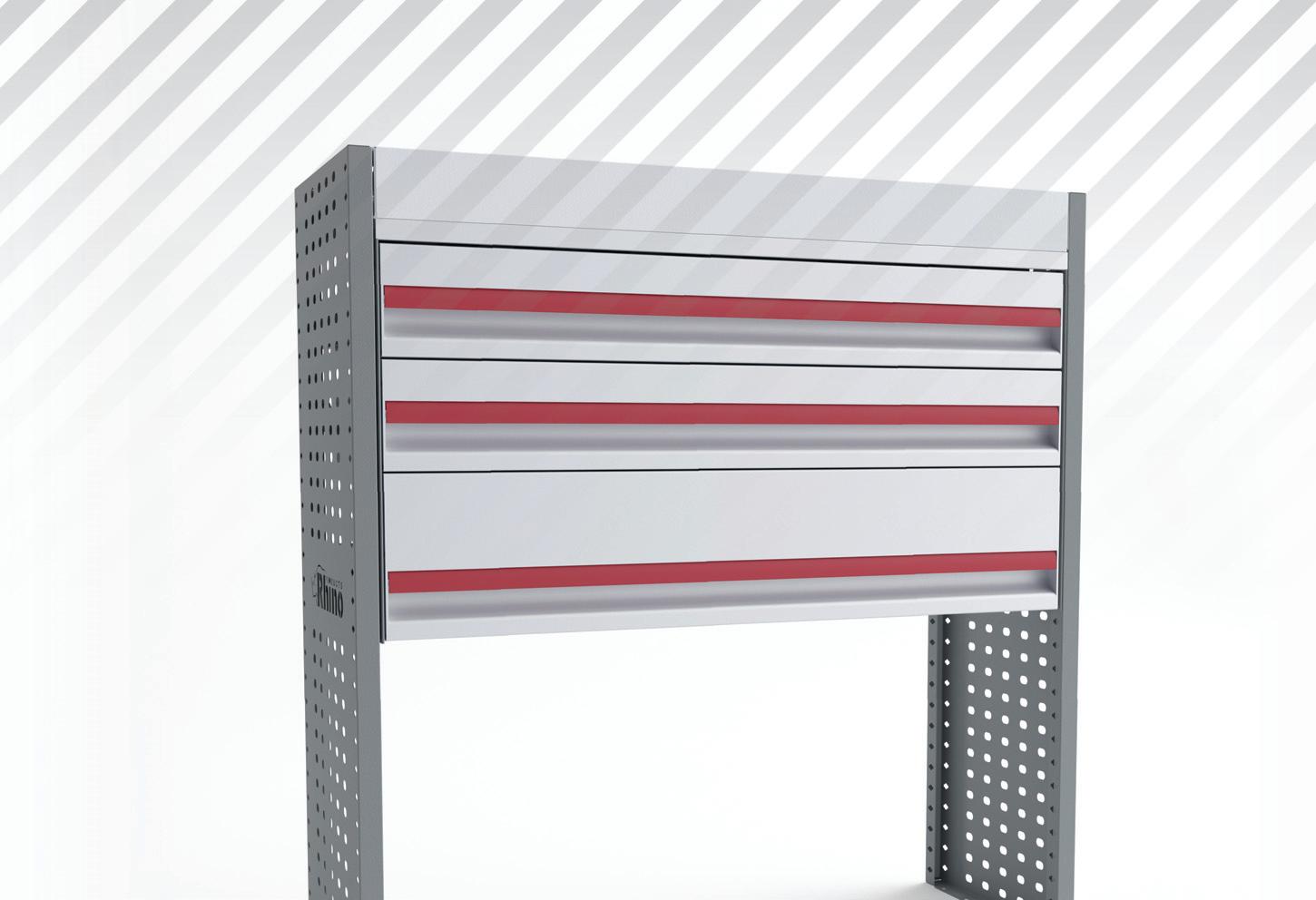

The company says that it has utilised ‘innovative mounting extrusions’, to make MR4 easy to fit. It says that there is no drilling required for many vehicles, using only Tek screws to secure into place.
Speaking on the new launch, Steve Egerton, Group CEO, said: “We are extremely proud to be revealing our first internal racking product, MR4, at the CV Show this year. 2022 was an extremely exciting year for the Rhino Products Group, with a wealth of new external accessories launched, and we are proud to be starting 2023 with our very first internal product in our 20-year history. Rhino’s focus has always been around continuous product development and innovation, and we are excited to be applying these same principles to this new product range.
“The release of MR4 follows on from our acquisition of van racking manufacturer, Hubb Systems Ltd in 2022, however, we

have totally overhauled and upgraded their existing racking range to remove weight, improve the look and ultimately deliver a much higher quality product. At the same time, this launch is only the start of the MR4 journey, with a wealth of stylised additional accessories including drop fronts, kick plates, drop doors and storage containers coming soon.”
For more information please www.rdr.link/pat029
Rhino’s focus has always been around continuous product development and innovation, and we are excited to be applying these same principles to this new product range.
To help tradespeople decide if now is the right time to consider an EV, Volkswagen has introduced a new digital tool to support businesses in selecting the engine type best suited to differing working requirements.

The number of electric cars on our streets is on the rise – but when it comes to vans, many people remain unsure if an EV is the correct choice for them and their business. To help van users decide if an electric van is for them, Volkswagen Commercial Vehicles has launched a new digital tool, Van Fuel Advisor (EV4me).
The new tool has been set up to help businesses compare annual costs and indicative emissions of combustion engine, plug-in hybrid and fully electric vehicles. It can also recommend the most appropriate Volkswagen models for businesses, according to their driving practices. Taking into account factors including distance covered on a typical working day and access to charging facilities, the tool forms an impression of the business’ driving requirements.
● The all-new ID. Buzz Cargo is the manufacturer’s first fully electric van
● The Multivan – now available as a plug-in hybrid – allows businesses to drive in electric mode with no local CO 2 emissions for up to 30 miles
● Volkswagen Commercial Vehicles’ award-winning range of combustion engine vehicles includes the Crafter, the Transporter, and the Caddy Cargo
The suggestions allow businesses to compare annual costs and indicative emissions of plug-in hybrids and combustion engine vehicles with fully-electric models, as well as available government grants that further support businesses to go electric. Covering price of fuel, servicing, congestion charges and Vehicle Excise Duty, the annual cost estimate acts as a guide for the potential savings to be made in everyday running costs by going electric.
Craig Cavanagh, National Fleet Manager at Volkswagen Commercial Vehicles, said: “Choosing whether to electrify a fleet can be a daunting process for any business and, with the added considerations of
range, purchasing and running costs, it can be difficult to know which of the available options is most suitable.
“As part of our Working With You promise, we’re committed to making life easier by helping business owners choose the right vehicles for their business. This new tool provides suggestions tailored to their driving requirements, removing some of these uncertainties to give business owners peace of mind.”

To use the Van Fuel Advisor Tool, please www.rdr.link/pat030
For more information on the Volkswagen Commercial Vehicles range, please www.rdr.link/pat031
This new tool provides suggestions tailored to their driving requirements, removing some of these uncertainties to give business owners peace of mind.
For many heating engineers and plumbers a vehicle is a key part of the business. Buying a van outright is a large capital outlay, and if you don’t have the available cash, it’s just not an option. So, for many, financing can be an affordable option, and with different products available you can tailor what you need to your budget and requirements. At the same time, it also can be a minefield when it comes to working out what’s best for you.
Financing is a really popular way of running a vehicle for many businesses. However, before you start applying straight away there are a couple of things to think about. Here at Capital Fleet Solutions, we’ve put together some tips to help inform you about the kinds of things to think about when you apply for a finance product.
It’s important at this stage to note that we always advise speaking to an FCA-registered professional before taking up any finance products. They will be able to answer any questions for you about the types of products available and what may suit you best.
This is fundamental to any agreementdon’t enter into anything without properly budgeting the total cost. That’s not just the monthly payments – as there are different lengths and terms to each agreement, so not only do you need to work out what you can afford every month, but also what initial deposit you have available (more on this in the next point). You also need to check what final or ‘balloon’ payments there are. Some agreements also have stipulations on what condition the vehicle should be returned in, so you need to make sure that your business planning allows for any unforeseen additional outgoing costs.
Just as important as budget, it’s worth thinking about what kind of deposit you want to put down. In most cases, the more deposit you put down, the lower the monthly payments. However, in some cases putting down more money at the beginning may not actually be the best thing to do – for cash flow reasons. Either way, if you have an idea of what you want your deposit to be, this will make the process of applying easier. You may want a smaller deposit with higher monthly costs which would fit better with your cash flow projections, especially if you are in a start-up.
There are numerous finance brokers out there, so it’s important to choose a partner that has a good reputation and the right
experience. As we’ve said above, using an FCA-registered provider is important as they have already met the required standards. If you use Capital Fleet Solutions to do this, we have finance companies we’ve developed relationships with, so we know these providers are professional in their operations. We will also match your circumstances with their criteria to get the best fit for you.
Once you’ve thought through these, there are a couple of other things to note when you come to apply for finance. Firstly, the business will need to go through a credit check as part of the process. Once you’ve filled out the application, the finance provider will check your details, including referring to credit agencies. Other things they will look for include:
● Credit information on the Directors
● When the business started trading
● Financial performance including balance sheet and profit & loss
● Public records – County Court judgements, bankruptcies, insolvency
● Companies House information


So, that’s an introduction to some of the main things to think about and consider as part of the finance application process. We hope this has helped give some idea of what finance companies will be looking for, and how you can help get a step ahead in terms of financial planning before taking up an agreement.
For more information please www.rdr.link/pat032
we always advise speaking to an FCA-registered professional beforetaking up any finance products.



A low-profile overlay UFH solution, the new LowBoard 2 from Omnie consists of routed lower and upper panels with a combined profile of 18mm. The lower and ‘over’ panels have pipe channels that tightly sandwich and encapsulate the warm water pipe. Bonded to the over panel is a layer of patented aluminium AL HEX foil diffuser, designed to improve the in-channel, foiled surface area that is in contact with the warm water pipe. The company has put together a two-minute video running through the benefits of the new solution.
To watch the video www.rdr.link/pat034
Swapping out valves and equipment has been made simpler with the introduction of the Clever Couplerwhich can be used on a number of types of valves including zone valves, blending valves, double-check valves and combination valves. The solution promises the installation and removal of a component where there is no pipe movement available.
Available in 22mm and 28mm
Clever Coupler includes two stub adaptors, two insert adapters, four rubber ‘O’ rings and two vulcanised fibre washers, along with a small tube of silicon grease and an installation sticker. Clever Coupler is compatible for use with a wide range of equipment for 22mm & 28mm compression and 3/4” BSP & 1” BSP female pattern. It is made from DZR brass to help prevent corrosion.

To watch the video…
www.rdr.link/pat033
Pliers’ specialists KNIPEX has a range of crimping tools, including its Self-Adjusting Crimping Pliers for wire ferrules which are designed to provide reliable hexagonal crimping of wire ferrules from 0.08 to 16 mm² (AWG 6) by turning and setting the adjusting wheel, and all twin wire ferrules up to 2 x 10 mm² (AWG 2 x 8). Also new for 2023, the Twistor T has a crimp head that can be rotated 360° and has eight locking positions. The trapezial crimp profile has a high capacity range from 0.14 to 10mm², allowing wire ferrules to be crimped from almost any working position. The tool also has an automatic adjustment feature that adapts to different cross-sections, making it suitable for a variety of projects.
To watch the video… www.rdr.link/pat035
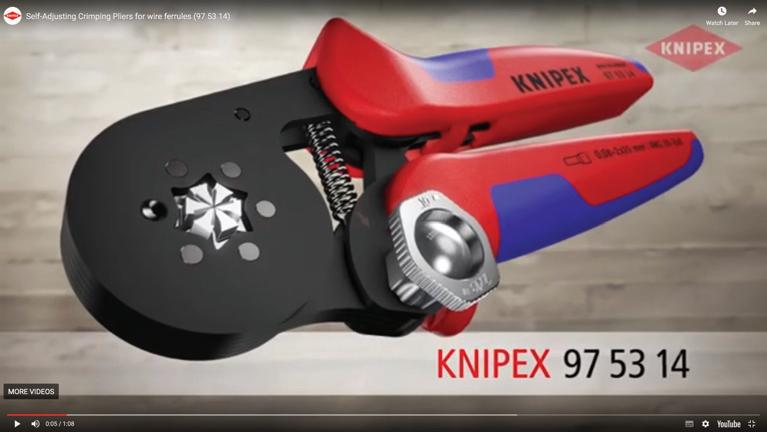
The Gas App UK Horror Show showcases some of the ‘finest’ work spotted by installers across the country. If you spot any masterpieces to rival these, please submit them to the good people at Gas App UK or email us: phpi@hamerville.co.uk
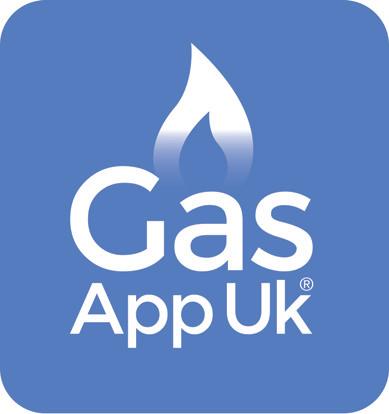


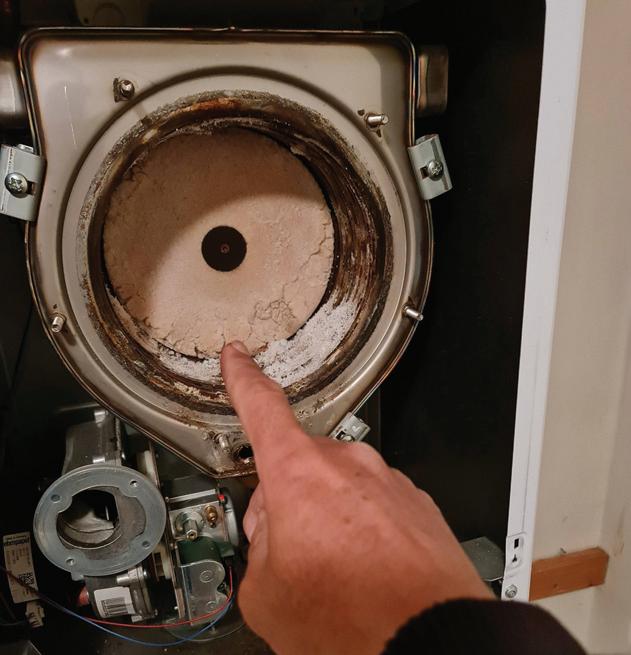






















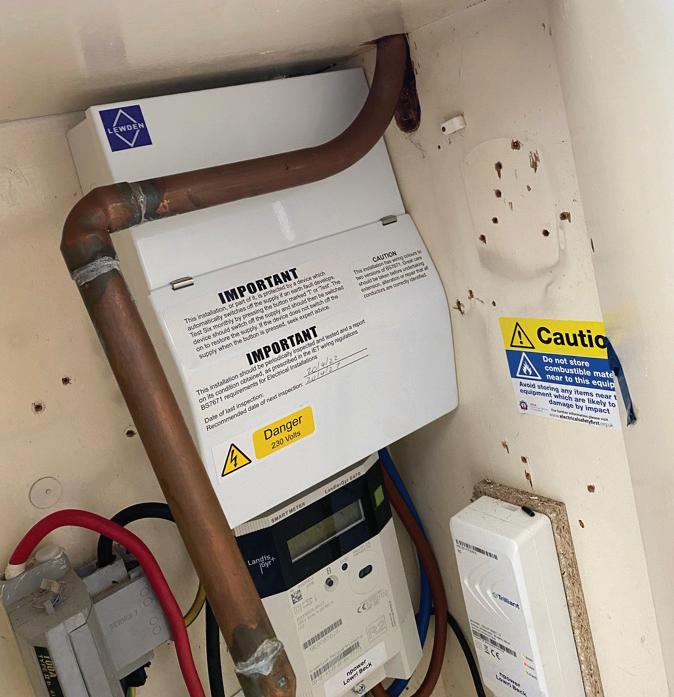






To celebrate the launch of Mira Form, installers that register the new product on InstallerPRO between 1st March –31st May can receive double points.





the company says this thermostatic shower is the most flexible model it has ever designed. As the popularity of both mixer showers and dual outlet models continues to rise, Mira Form allows installers to upgrade to a dual outlet, whether replacing an existing concentric mixer shower or fitting a new one.
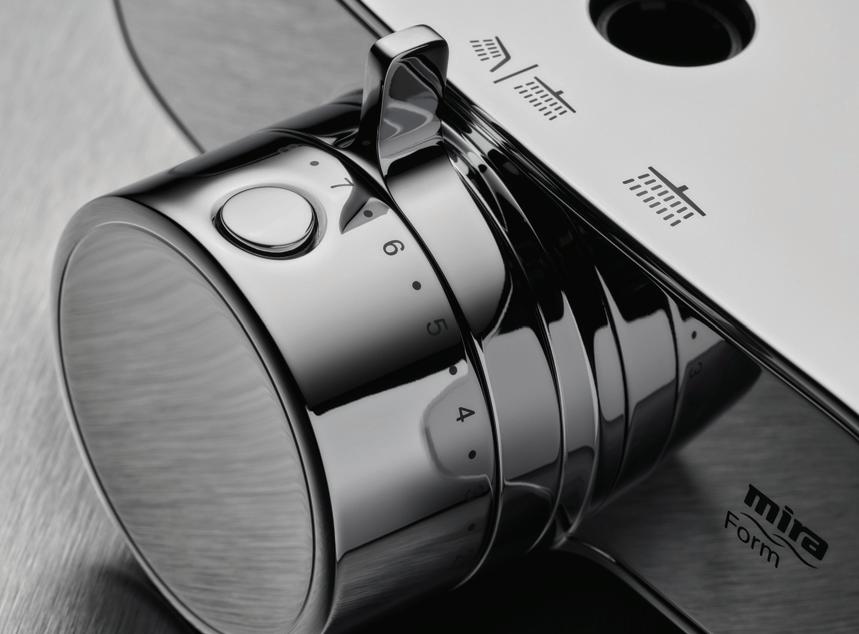


The shower features 110-153mm adjustable inlets, a telescopic deluge system with 200mm height adjustability, push fit fittings and an over shroud designed to cover up all previous connections and fixing holes. The company says that Mira Form is able to replace 95% of all concentric mixer showers on the market.
push button 110mm hand showerhead boasting four spray experiences whilst the dual outlet model offers users doublethe experience with the added inclusion of a 250mm deluge head for greater coverage.
The shower has been designed with Mira’s intelligent thermostatic technology – which helps to control the shower temperature, preventing the risk of scalding to provide a safer shower experience.
For more information on Mira Showers please www.rdr.link/pat036

Arecent Government report found that 95% of UK plumbers are male, suggesting a systemic issue within our industry that we have a duty to correct. While society is taking steps toward gender equality, the plumbing and heating industry still has much to do to become a viable and appealing option for women – especially those leaving school, in their early teens. We are currently experiencing a major skills shortage so it’s more important than ever that the industry broadens its horizons.
Part of the problem is that young girls tend to be steered away from engineering. One study found that just one-third of girls between the ages of 11 and 19 perceive engineering as a desirable profession, compared with more than half of boys the same age. Data paints a picture of girls having a similar level of interest as boys, but that interest wains as they get older. At GCSE level, 48% of pupils in STEM subjects are girls, but by undergraduate level, that plummets to 16%, despite women being
more likely to join higher education. Starting at school age, with careers advisors and teachers taking a leading role, it would benefit children and teens to be informed on the benefits of a future in engineering, while being given opportunities to explore the subject for themselves.
Recently we announced that we are providing education resources in partnership with the Multiply project, aimed at improving maths and numeracy in the UK. More must be done, however, if gender parity is going to be achieved and if we are to bridge the current skills gap.

As an educational charity, the CIPHE has a duty to dedicate resources to this topic and, as such, we support schools and colleges across the UK and provide resources for apprentices and college students. We are currently working with schools in Birmingham to introduce pupils to plumbing, heating and renewables and support greater funding for the Plumbing and Domestic Heating Technician apprenticeship.


It is key that young people of any gender are educated on the potential that plumbing and heating engineering has for them and their future. It must be made common knowledge that university is not the only path to a successful and profitable career, and that a variety of pathways into plumbing and heating, including paid apprenticeships are available. If we are able to increase the esteem of our industry in the eyes of young people, and especially girls, we will soon see the benefits that gender diversity has to offer heating and plumbing.
This piece was written in collaboration with Gemma Williams.
For more details please visit CIPHE.org.uk
It is key that young people of any gender are educated on the potential that plumbing and heating engineering has for themCEO of the Chartered Institute of Plumbing and Heating Engineering (CIPHE), Kevin Wellman, discusses the problem of gender inequality.
Viessmann heat pump, enabling householders to generate electricity for use both as energy and heat, reducing running costs of the heat pump as well as energy costs for the entire home.
“Recent increases in energy prices mean the financial case for solar is stronger than ever before,” commented Viessmann UK Director of Sales, Chris Johnson. “Plus, we’re using electricity more and more for heating and charging vehicles. The Vitovolt 300 offers a great foundation for UK homes to transition to renewable technology for heating and motoring. It’s a very attractive option for homeowners looking to reduce their reliance on energy companies while also increasing the sustainability and value of their property.”
The Vitovolt 300 package has plug-in solutions for electrical connections and fully wired matching components.




Power storage can be added via a Viessmann-offered BYD Battery Box Premium with all the power flows of the PV and battery system able to be monitored through the company’s Energy Management System.
The Vitovolt 300 product range includes monocrystalline modules with an output of up to 440 Wp guaranteed for up to 25 years. The Vitovolt 300 modules, which have a black anodized frame, especially dark cells and a black Tedlar foil, are suitable for installation on the roofs of detached houses, apartment buildings and commercial and industrial premises.

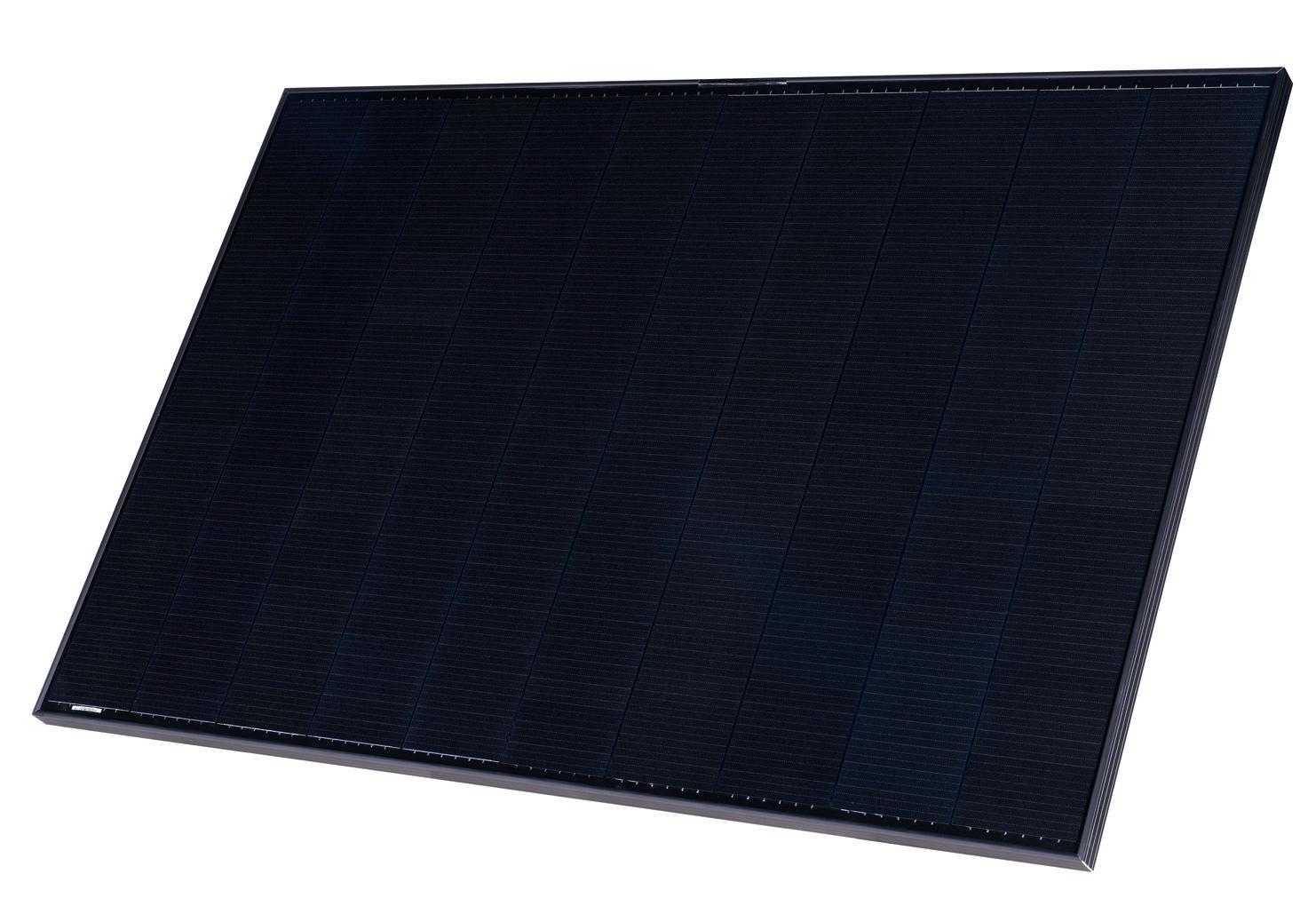
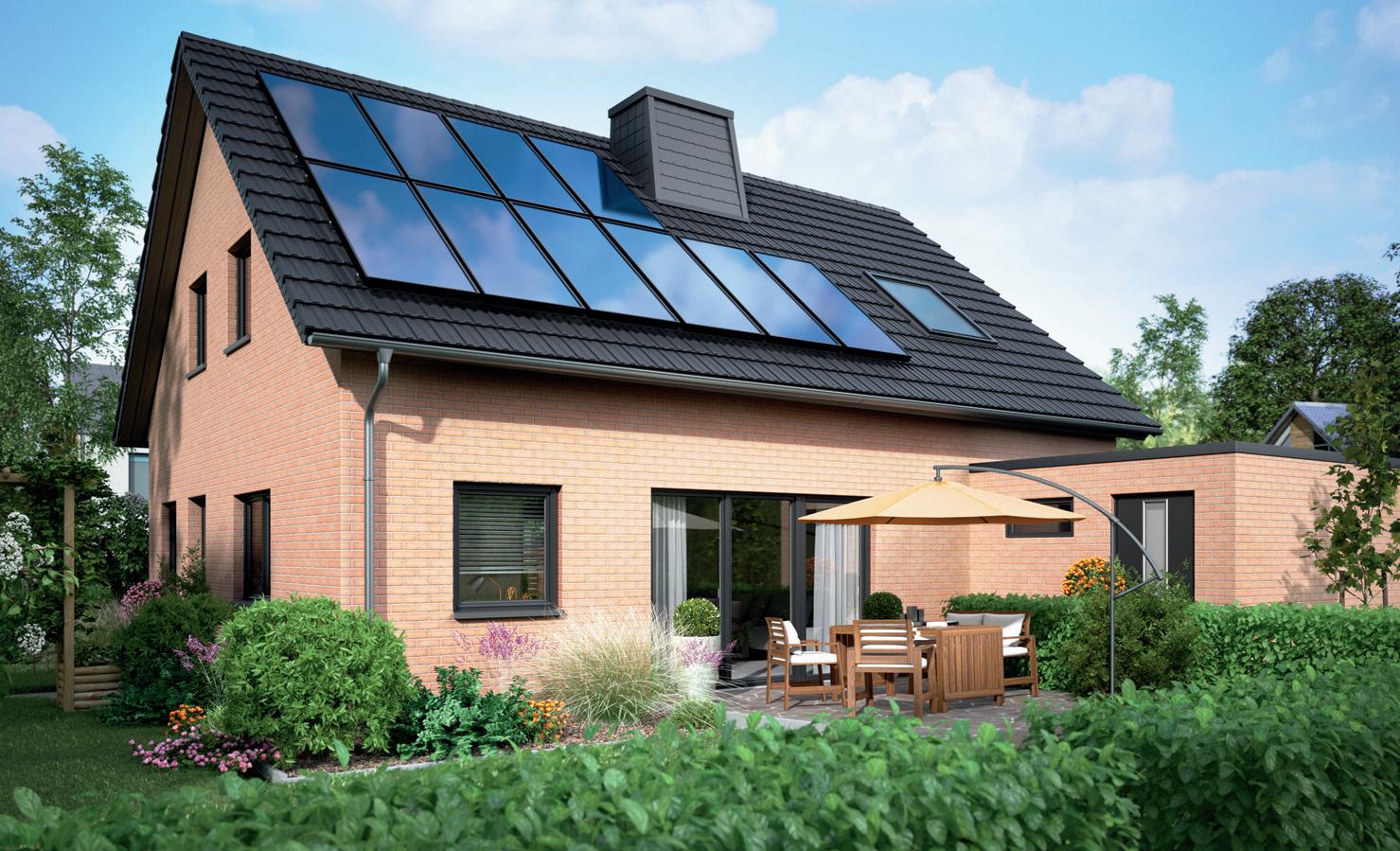
The photovoltaic solution comes with a 15-year product guarantee and incorporates a modular package of accessories designed to fit together seamlessly.
For more information, please www.rdr.link/pat037
The Vitovolt 300 offers a great foundation for UK homes to transition to renewable technology for heating and motoring.
A range of glass infrared radiators has been introduced by Pilkington United Kingdom Limited, part of the NSG Group. The company says the move is to support demand for low-carbon heating solutions in homes and non-domestic buildings.
The slimline radiator panel uses the glass manufacturer’s electrically conductive NSG TEC™ glass to convert electricity into heat, which directly heats objects and people inside rooms. The panels are single sealed units with wall brackets and will be available in a variety of sizes and power ratings.
The slimline panels have curved, polished edges and will be available with a polar white or mirrored glass front.
Leo Pyrah, Marketing and VA Manager at Pilkington UK, said: “Infrared heating has an essential role to play in the future low-carbon heating mix, as the phasing out of natural gas systems picks up pace in the years to come.
“Pilkington HeatComfort Panels are a practical and sustainable heating alternative to traditional radiators. It’s a low investment way of making immediate carbon savings in buildings, without the need for significant installation work. Meanwhile, its unobtrusive design helps enhance the aesthetical appeal of spaces.

“This innovation builds on our considerable experience in manufacturing heated glass for automotive and specialised transport, and naturally complements our existing glass technologies enabling sustainable change – from solar photovoltaics to thermal insulation glass.”

For more information please www.rdr.link/pat038
The Warmflow Agentis oil boiler has been designed with installation and service engineers in mind. The company says the Professional range will save engineers up to two hours installation time. The range includes a factory fitted Adey Magnaclean Pro magnetic filter. Agentis boilers are available in outputs 21-44kW.
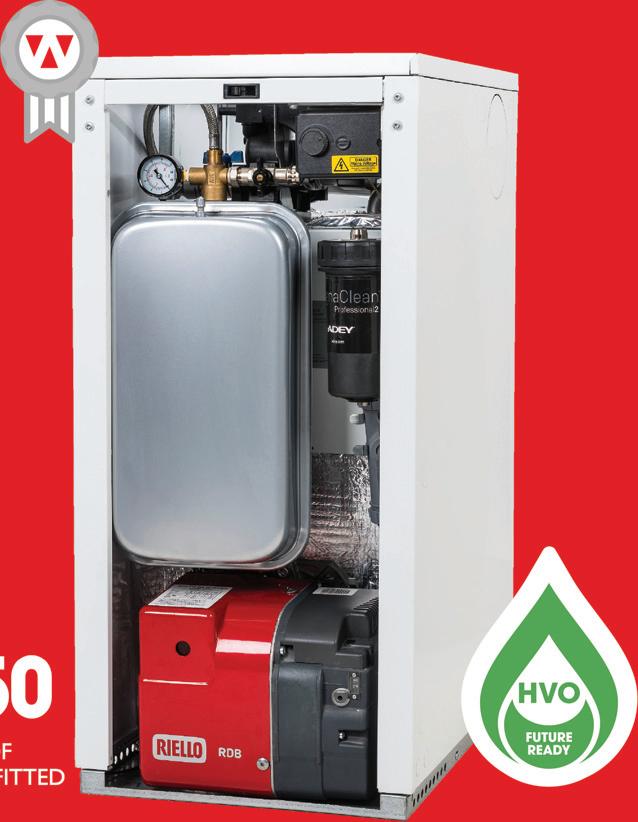
The Agentis Heat Only Professional boiler includes accessories such as a Crosland oil filter, Teddington fire valve and two bottles of inhibitor. A comprehensive 10-year warranty is now available for Warmflow Platinum Installers when installing and registering a Warmflow Professional boiler.
For more information please www.rdr.link/pat039

Carhartt′s Rain Defender relaxed fit lightweight insulated vest has been designed to help users keep core warmth. The vest is made from a durable Cordura fabric and lined with smooth nylon The lightweight design means it can sit beneath heavier coats in very cold weather. Wind Fighter technology is also incorporated into the garment. Storage space has been considered, with a zippered left chest pocket and two lower front pockets which feature a hidden snap closure. Inside the vest there are two further pockets, one with a zip, and the other with a hook and loop closure.
For more information please www.rdr.link/pat040
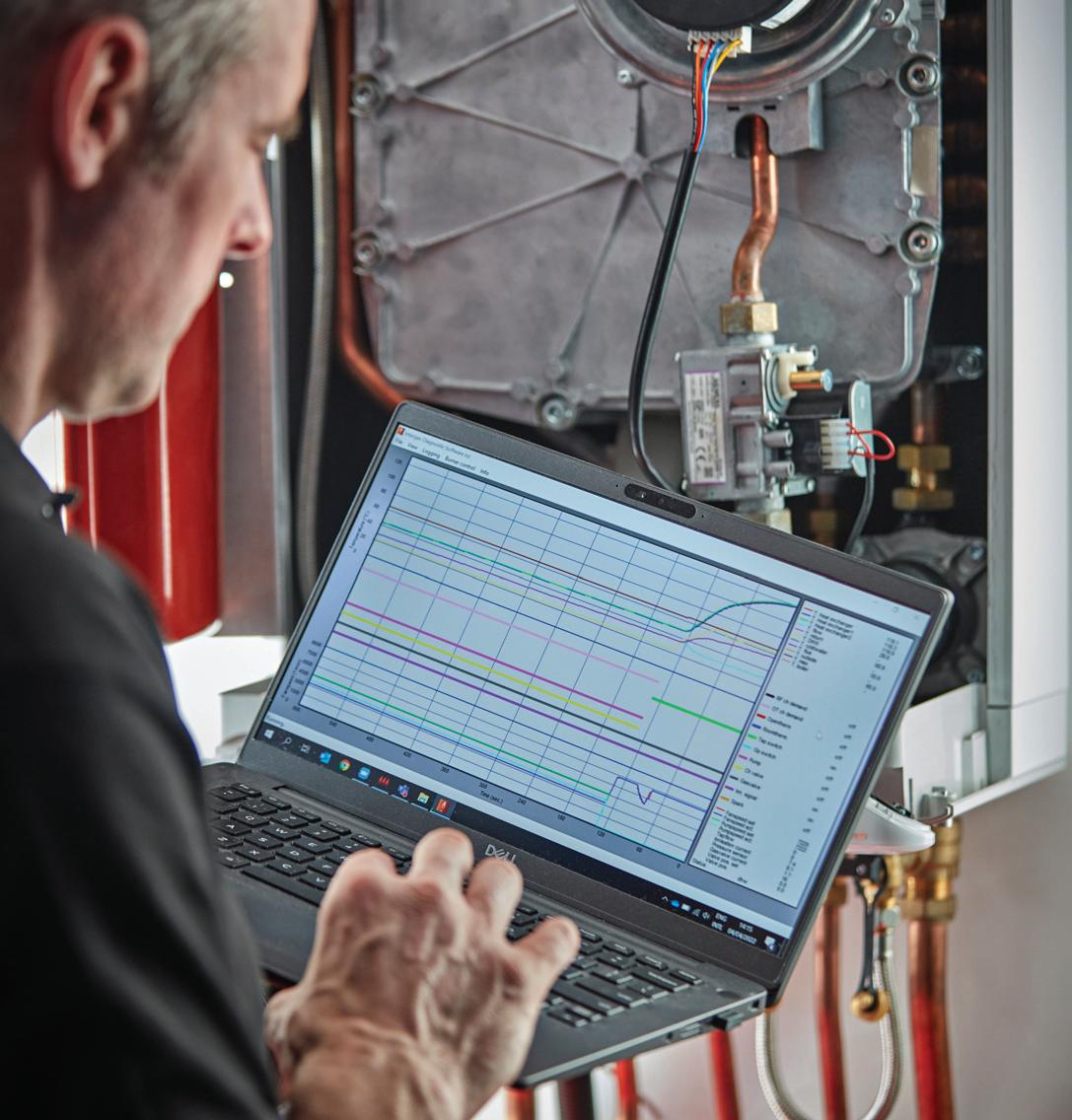
In an effort to create a new route to energy savings, Intergas is introducing Intergas Diagnostic Software (IDS). IDS provides instant access to the burner control units of all Intergas boilers enabling an installer to gain boiler performance insights on fault history, parameters, extended parameters, RF parameters and RF parameters 2.
Installers can also commission a boiler, produce and send detailed information on boiler settings to landlords and build a reliable picture of its historical operation to make evidence-based decisions on the required level of service and maintenance.
While this depth of statistical information is also available via the Intergas Dashboard’s remote management facility (except for HRE and Rapid models as neither has been fitted with an RF module), the company says not all homeowners are comfortable with the level of intrusion involved in remote management.

With this new option, they’ll be able to see, first-hand, a visual display of how many operational hours were spent in central heating and domestic hot water modes for example, along with gas and water volumes used for central heating and for showers/baths/basins. With this information installers can advise their customers on suitable controls and relevant upgrades, including low-flow taps and showerheads to reduce water use, to improve efficiency and lower bills.
Installers will need a USB cable that connects the PC to the boiler. IDS does not recognise Apple products, eg iPad, MacBook etc...
For more information please www.rdr.link/pat041
Fernox has confirmed its water treatment products will now be packed in 265ml and 500ml bottles manufactured from 30% recycled High Density Polyethylene (HDPE).
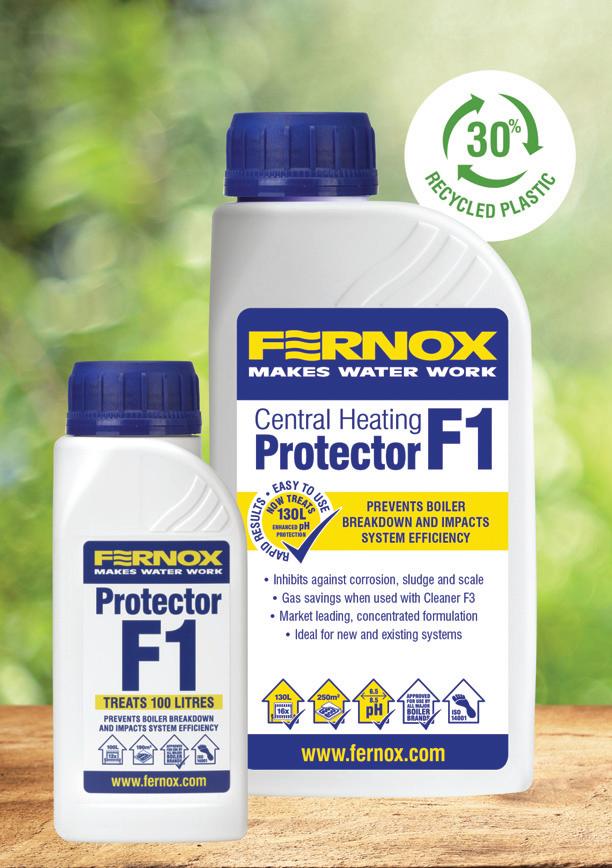
“Although the Fernox bottles will look and perform like our existing ones, the adoption of 30% recycled content will lower our overall use of virgin plastics,” explained Greg Banham, Sales Director from Fernox. “However, there is always more to do. Sustainability is a work in progress, and we are continuously looking to improve our efforts in supply chain, logistics and overall environmental impact.”
For more information please www.rdr.link/pat042
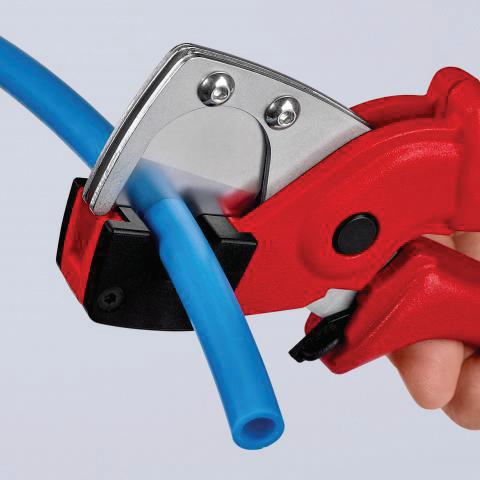
The Knipex Pipe Cutter for Multilayer and Pneumatic Hoses has been designed to simplify and enhance the process of cutting liquid, multilayer, and pneumatic hoses and pipes commonly available on the market. The Pipe Cutter can be used for a wide range of pipe and hose cutting applications, ranging from Ø 4 to 20 mm. The tool is designed with a universal support for right-angled positioning, which the company says ensures accurate and precise cuts every time.
The tool features ergonomically shaped handles which are made of glass fibre reinforced plastic, and it has an automatic opening feature. The exchangeable blade is another notable feature - with an opening spring and locking device, designed to make the tool both easy to use and highly reliable. The blade is made of high-strength special grade steel, oil-hardened and tempered.
For more information please www.rdr.link/pat043
Along with the Work Trousers range, Hoodies and Sweatshirts are amongst the most popular products for customers of Snickers Workwear. Designed for professional craftsmen and women, the ‘full zip’ or ‘overhead’ styles are suited as mid-Layer working clothes. The company says they will fit well with a jacket on chilly days and can be worn as an outer layer in the spring and summer months. There are over 40 styles and a host of colours to choose from including the new khaki green option as well as Class 1 and Class 2 High-Vis.
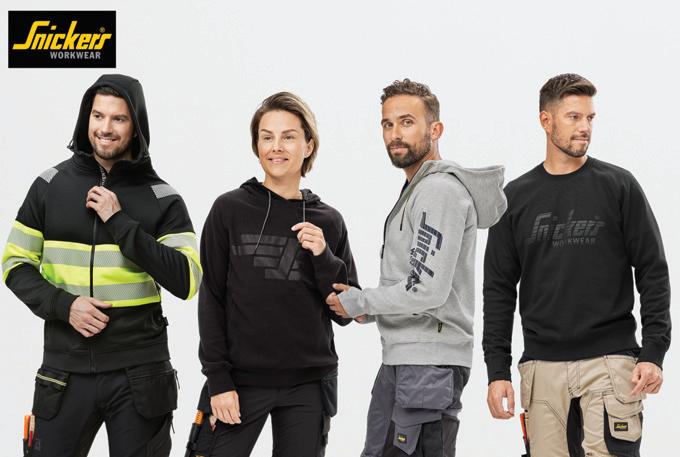
For more information please www.rdr.link/pat044
A new addition has been introduced the Kudos Premium Collection - the Ultimate10 shower enclosure range. These new 10mm glass shower enclosures come with a double action hinge, enabling the pivot door to open both inwards and outwards, offering a solution where space is at a premium.
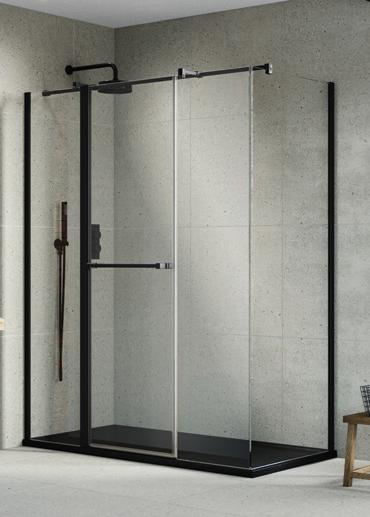
The new frameless range has been designed to be modular, offering lots of design configurations. The pivot door can be installed directly from a wall post or from a glass panel and will fit on a shower tray or wet room floor. Each door and panel is 1985mm high including fittings and can be installed in a corner or recessed situation. The collection is made up of six door models, with off-wall options for recess or corner (standard and large doors) and for off-panel recess and corner.
For more information please www.rdr.link/pat046

LG Electronics has achieved the Quiet Mark accreditation for its air to water heat pump – the Therma V Monobloc "S". Quiet Mark is the independent global certification programme associated with the UK Noise Abatement Society charitable foundation. The LG R32 Monobloc ‘S’ air to water heat pump range offers lower noise levels per unit by up to 3dB(A) compared to the previous model. The unit comes with a Seasonal Coefficient of Performance of up to 4.67 (Average climate/Low temperature application) and a A+++ rating. The COP rises to 4.9 (Outdoor air 7°C/Leaving water temperature 35°C) and can deliver leaving water temperature of 65°C if required.
The models that have achieved the Quiet Mark accreditation are the 5, 7, 9 & 12kW models in single phase as well as the new 9 & 12kW three phase models.
For more information please www.rdr.link/pat045

Altecnic Ltd .............................................................................(page 31)
www.rdr.link/PAT 100
Fireangel Safety Technology Ltd ........................................(page 11)
www.rdr.link/PAT 101
Grant Engineering UK Ltd ...................................................(page 19)
www.rdr.link/PAT 102
Installer Show ......................................................(inside back cover)
www.rdr.link/PAT 103
Navien Ltd .........................................................................(back cover)
www.rdr.link/PAT 104
Panasonic Heating & Cooling ..........................(inside front cover)
www.rdr.link/PAT 105
PHPI Online ...........................................................................(page 27)
www.rdr.link/PAT 106
rdr.link .....................................................................................(page 39)
www.rdr.link/PAT 107
Salamander Pumped Shower Systems Ltd ....................(page 37)
www.rdr.link/PAT 108
Snickers Workwear ................................................................(page 9)
www.rdr.link/PAT 109
Tado ...........................................................................................(page 4)
www.rdr.link/PAT 110
Toolfair ....................................................................................(page 35)
www.rdr.link/PAT 111
